
COMMUNITY VOL 9, ISSUE 1 | SPRING 2023
EDITOR’S NOTE
On a normal Thursday afternoon I am sitting in Turntable Coffee Counter, during the quiet hours when teachers stop by after school and late meetings are held. It’s the first sunny and warm day in February, and the light pours in on Ashley to my left, sitting with a stack of art made by her students, bobbing her head to the music.
Patrick, at another table to my right, in his best khakis and blue button up, is studying a Playbill the way he does every copy of Our Jackson Home, as if every single word on the page might be needed to commit to memory. There are plenty of days I daydream about being somewhere else, but today it feels like a miracle that I’m right here in this very spot with these people. Before long, Patrick has wandered over to ask Ashley about the art she’s shuffling through. “You’ve got their brains working! That’s great stuff.”
“Keep doing what you’re doing. Don’t stop,” he says before he sits down.
The sun is nearly set and he sits back into his chair, and she settles back to grading. My job at Our Jackson Home, strangely enough, feels like it has been to sit here and notice, to hope that in stories and events and in pages of the magazine we will slowly build a community where it’s likely two people who would have never met might step across the room and tell each other: "keep doing what you’re doing" and that what we are doing, whether we are teachers or artists or just simply neighbors, will continue to create moments of connection and belonging.
Thanks to The Greater Jackson Chamber for giving us the opportunity to paint a picture of our community in these pages, to give a glimpse at the many people who bring us together through the arts and culture and businesses who make this place home.
COURTNEY SEARCY, EDITOR-IN-CHIEF
A PUBLICATION OF OUR JACKSON HOME
VOL. 9, ISSUE 1: COMMUNITY BROUGHT TO YOU BY THECO | WWW.ATTHECO.COM
EDITORIAL BOARD
EDITOR-IN-CHIEF DESIGNER
Courtney Searcy
COPY EDITOR
Olivia Chin
POETRY EDITOR

Lauren Smothers
CONTACT
WEBSITE & BLOG ourjacksonhome.com
PHONE & EMAIL
731.554.5555
courtney@attheco.com
ADDRESS 541 Wiley Parker Road Jackson, TN 38301
CONTRIBUTORS
FEATURED WRITERS
Eric Archer
Avery Chenault
Hannah Gore
Gabe Hart
Trista Havner
Lily K. Lewis
Elvia Trejo
FEATURED PHOTOGRAPHERS
Eric Archer
Cari Griffith
Hannah Gore
Tamara Reed Miller
Courtney Searcy
Maddie Steele
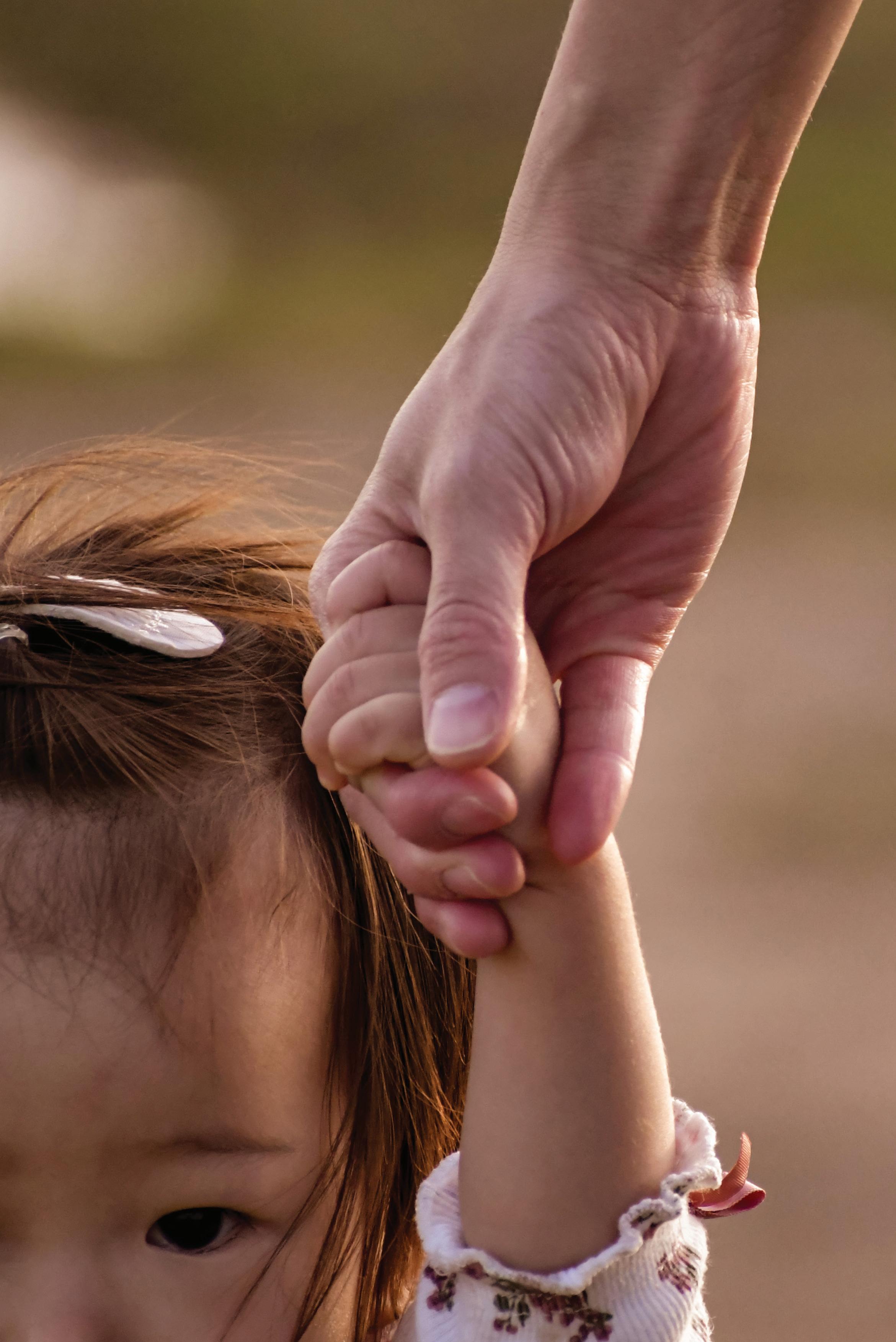
CONTENTS
6/STORY No Reverse
Gabe Hart
16/STORY
Mona Lisa Lanier
Avery Chenault
20/ESSAY
Places of Connection
Lily K. Lewis
25/STORY Companion Gallery
Eric Archer
34/ESSAY
This Space and Time
Trista Havner
40/POEM
Home
Hannah Gore
47/ESSAY
A Measure of Love
Elvia Trejo
52/FEATURE
Downtown Jackson
Beth Ann Simpson
56/SPONSOR SPOTLIGHT
Growing Our Community
The Greater Jackson Chamber
NO REVERSE NO REVERSE
BY GABE HART
PHOTOS BY MADDIE STEELE
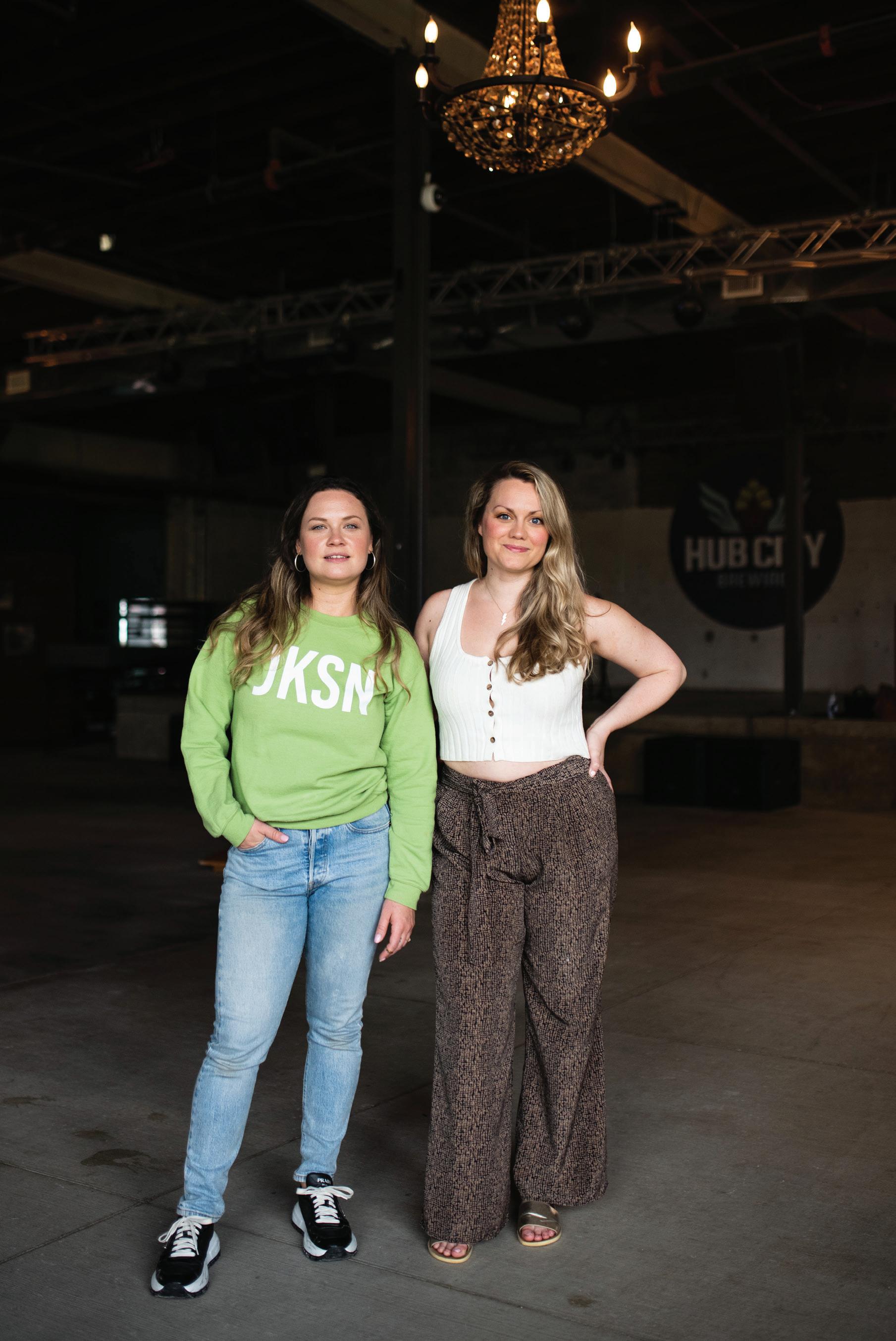
6 • OUR JACKSON HOME
Anytime I tell anyone that I’m from Jackson, I always follow it up with a postscript; an annoying little addendum that became an involuntary response at some point in the recent past.
Someone will ask me where I’m from, and I’ll start with Tennessee. They’ll inevitably comment on the mountains, and I’ll have to disappoint them by telling them that I’m on the other side of the state — the flat side. Then, I’ll tell them I’m from Jackson and they’ll wait for me to explain where that is. Thus my postscript was born: “...right in between Memphis and Nashville.”
Jacksonians know that this isn’t entirely true. We’re closer to Memphis in terms of mileage — about thirty miles closer to be exact. I think we’re probably closer to Memphis in terms of our vibe and our culture, too. But, what I’ve realized as I’ve pondered the necessity of explaining where Jackson is located on a map is that I’ve never given Jackson enough credit for being its own space with its own culture. Part of that reason, however, is that nothing has ever clearly defined that culture here.
Growing up, we were really excited that Wal-Mart would be a Supercenter. Then, The Columns developed with chain restaurants and box stores peppering the development. People migrated to the northwest part of the county, building cul-de-sac subdivisions of facsimile construction. Downtown was left empty; midtown was much the same. East Jackson was stagnant. The south side of town got a Long John Silvers and a Hardee’s, but for many, many years nothing of culture or originality seemed to be created.
Casey Jones and Carl Perkins were
about the only things I’d ever associate with any sort of Jackson identity and even those tended to be caricatures of the people themselves. In my mind, Jackson was never able to stand on its own; it was always a space between Memphis and Nashville.
Over the last several years, however, there's been a buzz building around Jackson. We have a young mayor who is willing to look toward the future. We have entrepreneurs investing in Downtown Jackson. We have creatives who are taking risks to make Jackson a place that is vibrant and authentic. We’re no longer satisfied with being given restaurants and stores that are reproduced everywhere else; we want something that’s ours.
Music is something that has forever been woven into the culture of Jackson. While Carl Perkins and the Rockabilly sound are what most people think of first, that staccato rhythm and piano twang is only a part of what Jackson’s music scene was and is. The musical talent that Jackson has produced — from Full Devil Jacket to Erin Rae to LOLO — is as diverse as the community. The problem, though, is that Jackson never had an infrastructure to develop that talent. At least not until now.
Lauren Pritchard-Cobb, known everywhere else as LOLO, is more than just Jackson famous. She’s established herself globally as a powerful voice in the music industry after a stint on Broadway. She’s collaborated with major acts like Panic! at the Disco and written a critically acclaimed off-Broadway musical. Her prolific songwriting has netted her multiple albums, but her strength lies in her desire for autonomy and authenticity through her music. A few years ago, she
VOL. 9, ISSUE 1: COMMUNITY • 7
left her label at Atlantic Records, moved back to Jackson, and immediately started to invest in her hometown.
Sitting in her kitchen in Jackson, she reflected on leaving her label and thus beginning the process of bringing a new kind of investment to Jackson — an idea so serendipitous that it was fifteen years in the making.
“A lot of record deals are very, very restrictive. I realized that I was not willing to concede certain things under a major label, “ she said. “When I decided to leave the label, it was a very frustrating process that took over a year to complete.”
Once she left the label, Lauren reached out to an old friend; someone she had known for over a decade.
Ashley Kate Adams’s energy is infectious. Her voice is powerful and vibrant; it’s exactly what you would expect from someone who has performed on Broadway for years. We met at the public library in Downtown Jackson, and I was worried that the tranquil setting wouldn’t be able to hold her vitality.
Ashley Kate grew up in Louisville and attended the Cincinnati Conservatory of Music, a prestigious school for the performing and media arts. She moved to Manhattan at the age of 21, landed her first role on Broadway at age 23, and has been on multiple television and film productions. Not simply satisfied with being in front of the camera or the crowd, she began producing music with her former classmate from CCM, Mitchell Walker. After nearly a decade of helping artists produce albums, they decided to start their own label — No Reverse Records.
“Back in 2005, Mitchell and I first met in Cincinnati and we would
drive around in my father’s car — a red Chrysler that would only move forward; it couldn’t back up. When we were looking for a name for our label, it hit us: No Reverse Records. It was something that honored our past as friends, honored my father who has since passed away, and honored music because my father taught me to love music in that car when I was a kid,” she explained.
No Reverse launched in 2021, right around the time Lauren was looking for a trusted ally to produce her next album(s). Drawing on their personal connection and friendship, No Reverse felt like the perfect place for Lauren to turn.
Ashley Kate recalled the phone call.
“Just after we started the label, Lauren calls me. Not only is she my friend, but I’m also a huge LOLO fan. So, she calls me and was wondering if we’d be interested in making a Rockabilly record and we were so excited about it.”
The beginnings of any venture, personal or business, is always laden with excitement. But, the genesis of anything can also be extremely frightening. Both were true with the start of the label. An underlying and stabilizing bedrock, however, was the friendship that had been forged over a decade between two southern women who found themselves in the epicenter of culture in New York City.
“Ashley and I have known each for a very long time. I knew they had started this label and I had been on my own since I left Atlantic Records,” Lauren explained. “I knew a lot about Ashley Kate and the work she and Mitchell had done, so I reached out to them because I knew I would continue
record, it was moment. I around the studio parts on the but peaceful and I allowed this would my life. It was
8 • OUR JACKSON HOME
scarlet rope
"When we got to Jackson to record, like a lightning in the bottle moment. took a moment to look around at everyone recording their parts record, and I felt this eerie but presence of ‘you’re home’, and myself to think about how this look if this was the rest of my such a peaceful feeling.”
"When we got to Jackson to record, it was like a lightning in the bottle moment. I took a moment to look around the studio at everyone recording their parts on the record, and I felt this eerie but peaceful presence of ‘you’re home’, and I allowed myself to think about how this would look if this was the rest of my life. It was such a peaceful feeling.”
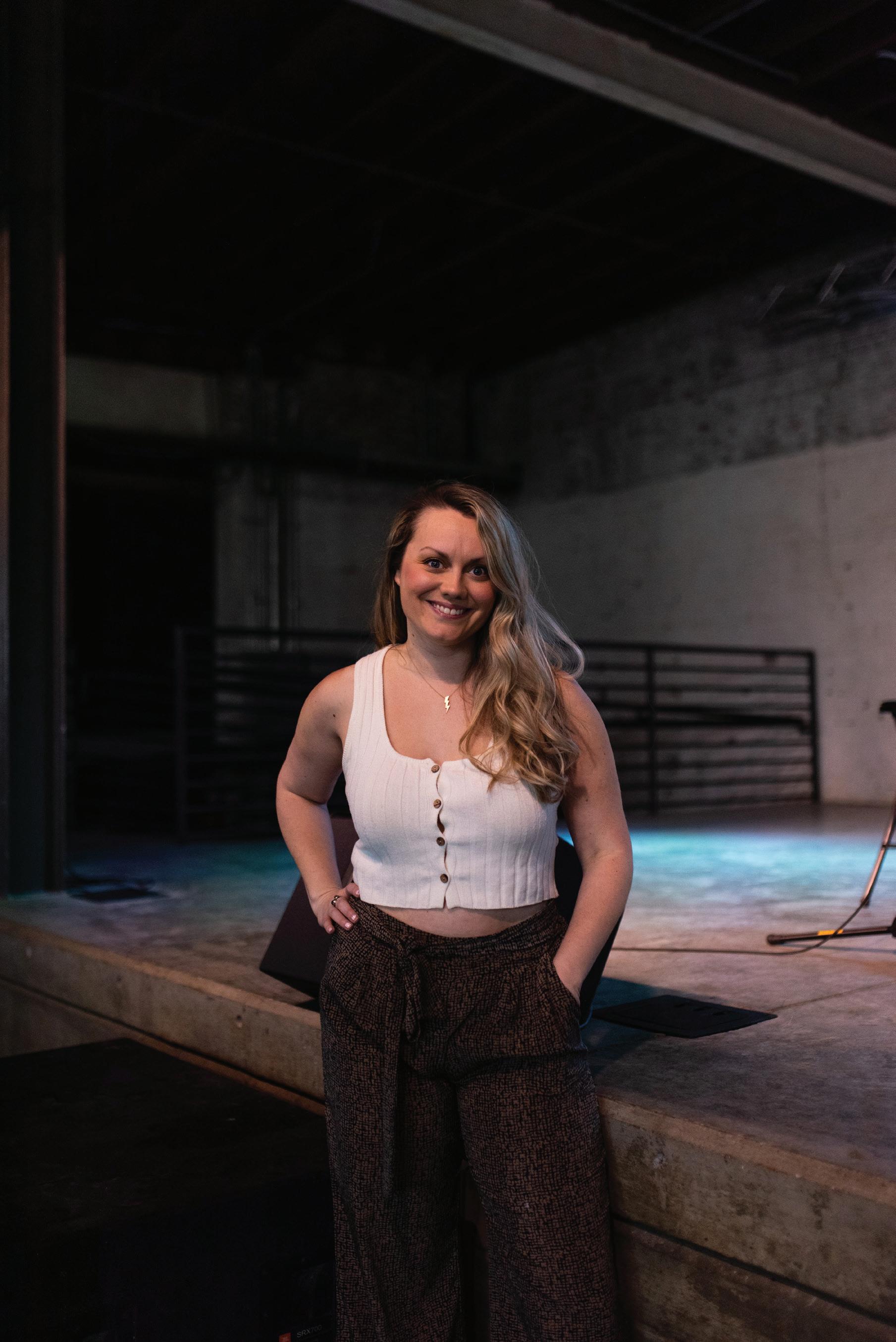
VOL. 8, ISSUE 2: COMMUNITY • 9
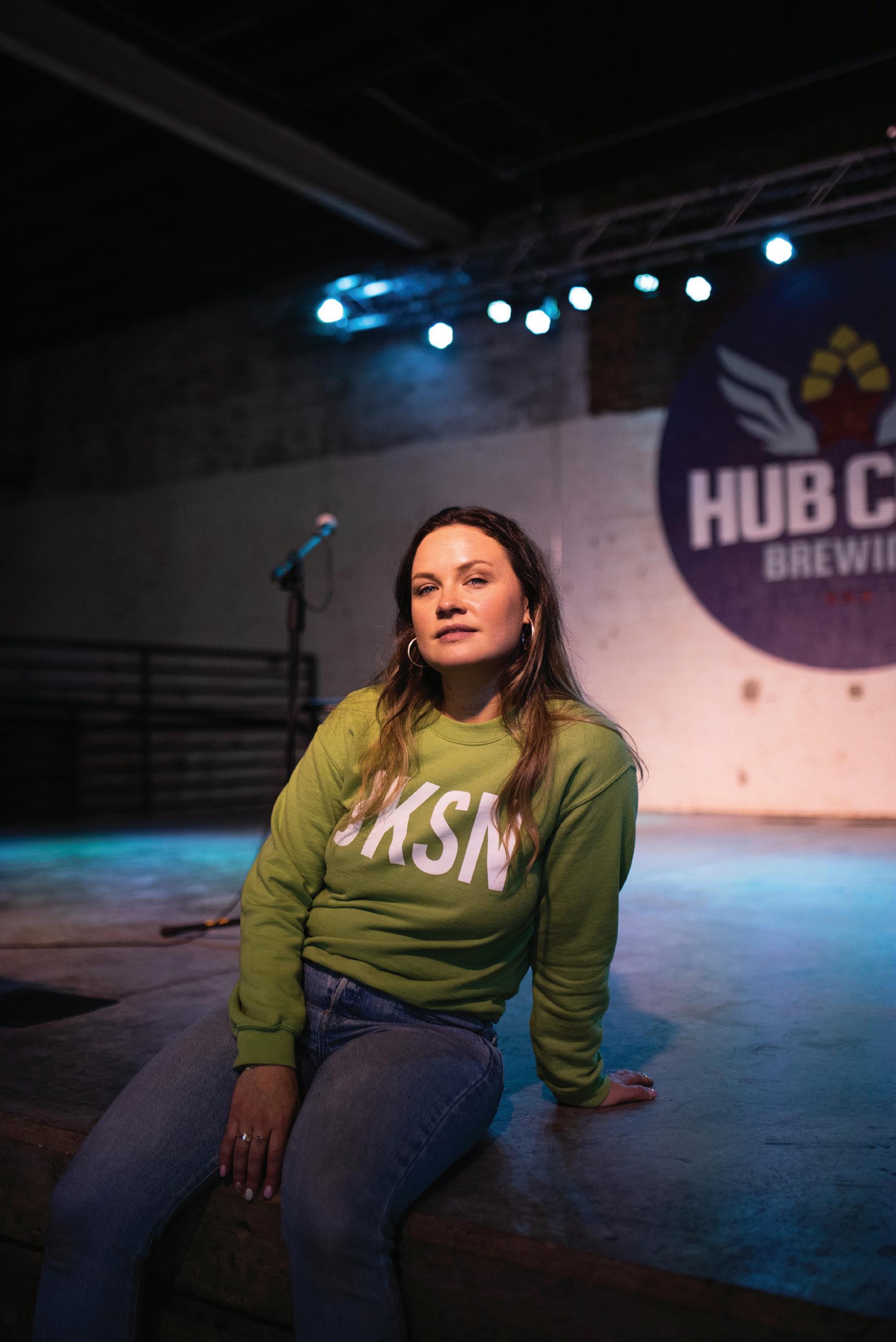
10 • OUR JACKSON HOME
to want to keep making records.”
When Ashley Kate got the call from Lauren about joining the label, Ashley Kate couldn’t hide her excitement, but she also immediately recognized how their personal relationship would be a huge asset for their professional relationship.
“Not long after my father passed, Lauren became a huge presence in my life — just showing up for me. Even though we’d known each other for a while, we started to realize we had so much in common: our individual values, our passions, our family values. We were personally getting close while also having so much in common professionally,” Ashley Kate said. “One of my favorite things about Lauren is how she deals with people, her sense of boundaries and interpersonal communication. We were similar in that way. And, not only does that make for a great friendship, it also lends itself to being successful business partners.”
Conversations for the recording process began in late 2020 and in 2021 Mitchell and Ashley Kate made their way to Jackson to start the recording process with Lauren at Jaxon Records.
“I had two albums I really wanted to make post-pandemic, so I reached out to Ashley Kate and explained the concepts of the albums and just told her what I wanted to do,” Lauren explained. “They were like ‘Hell yeah! Let’s do it.’ And then we were off.”
The recording process was so good that two other albums were recorded in 2021 by Lauren under the No Reverse label. Not only was the music production brimming with output, something else was happening with the label — a change that Ashley Kate felt the first time she was in Jackson.
“When we got to Jackson to
record, it was like a lightning in the bottle moment. I took a moment to look around the studio at everyone recording their parts on the record, and I felt this eerie but peaceful presence of ‘you’re home’, and I allowed myself to think about how this would look if this was the rest of my life. It was such a peaceful feeling,” she recalled.
After the album was made, Ashley Kate and Mitchell headed back to New York City, but something about Jackson was sticking with Ashley Kate.
“After the recording, I went back to New York, but I couldn’t shake the feeling of Jackson and I knew I wanted to get back as quickly as I could,” she said. “We came back to Jackson a few months later and recorded another album with Lauren and released it with the Bicenntenial Celebration at the ballpark.”
Across the table, after she said those words, I tried to put myself in Ashley Kate’s shoes for a second and wonder what it would be like to have the feeling of Jackson ever present in my mind if I found myself living in a different town. The reverse has happened to me many times. I would feel the presence of a town in Texas where I would spend weekends with my daughter. I lived in Jackson, but I felt McKinney calling me. I had never considered Jackson someone’s McKinney. I’ve lived here my entire life, but Ahsley Kate was seeing and feeling parts of Jackson that I had taken for granted. When I asked her what tangible things she could match to that feeling of “peace” she had in the studio, her answer was swift and certain.
“The people in Jackson — Anthony and Lauren Kirk, The Pruetts, Lakyn Bowman — all of these young, warm, and welcoming creatives and
VOL. 9, ISSUE 1: COMMUNITY • 11
entrepreneurs. I saw my home in the faces and energy of others in Jackson. There are so many people where I saw my future in Jackson,” she said.
When the decision was made to move No Reverse Records to Jackson, Ashley Kate knew she couldn’t stay in New York. It was a city she and her husband had fallen back in love with during the pandemic; it had been home for her for nearly 15 years, but she felt what was waiting in Jackson was something in which she needed and wanted to invest.
What makes No Reverse different as a record label is that they give their artists autonomy while supporting them at the same time. In essence, they put the artist ahead of themselves.
“One of the most important characteristics of No Reverse is that the artists own 100% of their music. We are working to support them in the making and marketing of the album. Basically, anything they need help with. We’re a full service label company that doesn’t make artists sell their soul to us,” Lauren explained. “We look for touring opportunities, sync licensing opportunities, marketing opportunities; we just want to be a constant support. We take a 20% service fee, but that’s it.”
Not only will No Reverse Records be an artist friendly label, the plan is to weave the label with the existing artistic community in Jackson and begin to establish an infrastructure for creatives
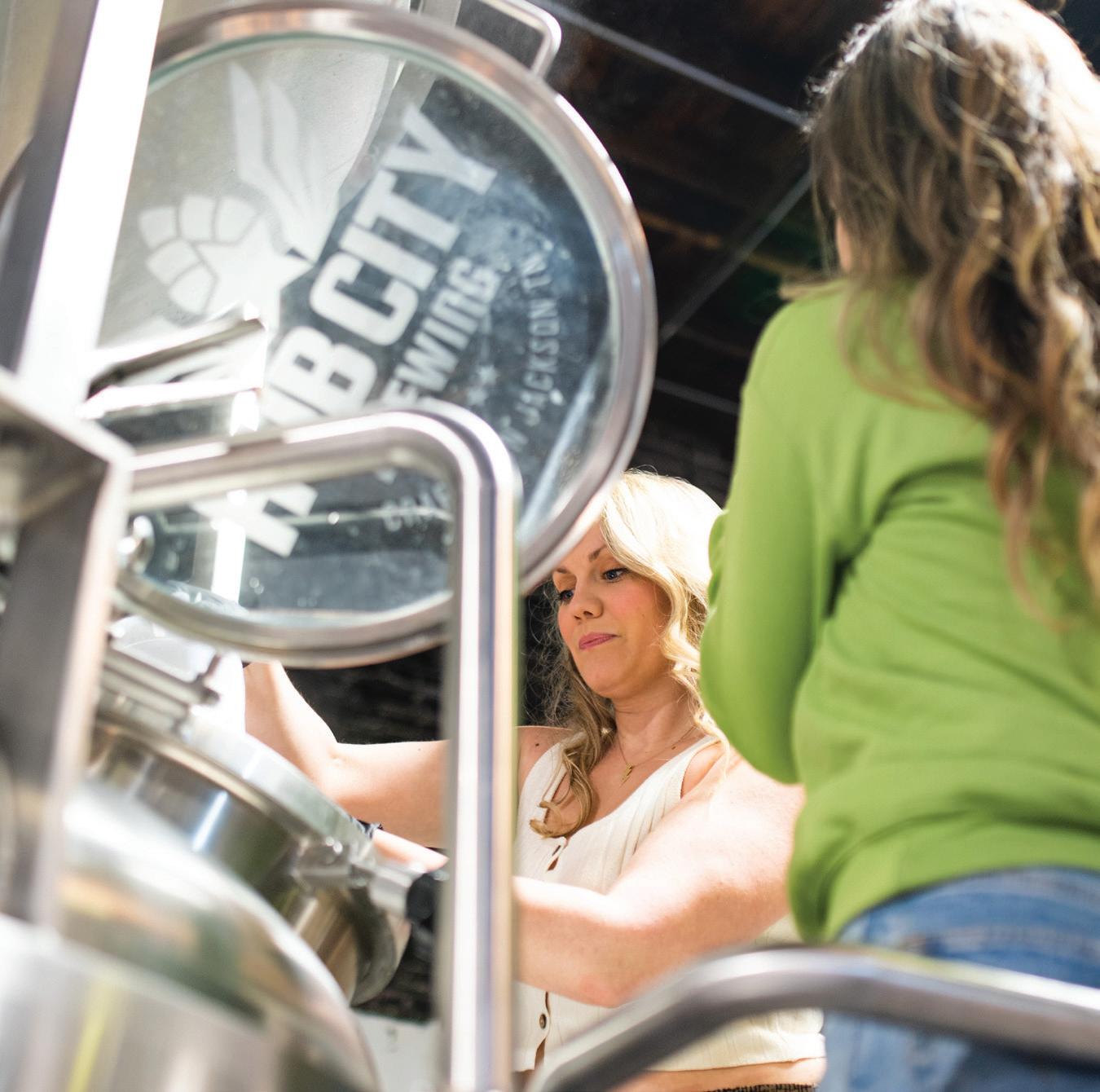
VOL. 6, ISSUE 2: HOME & GARDEN • 12
12 • OUR JACKSON HOME
musical, visual, and any other type of art that someone may want to have in their daily lives. Not only will that infrastructure provide opportunity, local musicians will also have a chance to assist with the record making process.
“We want to partner with the community to create an actual music industry here in Jackson because we have enough talent in this town to be on par with what Detroit was with Hits USA —a fleet of talented musicians that people from all over the country would come to work with,” Lauren explained. “That industry used to exist here, but it never got the support it needed. What we’re trying to create is a world where we can not only support local artists here (writers, singers, musicians), but also provide support for artists all over who want talented studio musicians and would want to record here in Jackson at our label.”
Having a known record label want to invest and exist in Jackson is newsworthy enough, but No Reverse wants to immerse itself in the culture of Jackson and help create something of intrinsic value amongst all of the creatives in the city. That vision is quickly becoming a reality already.
On the first weekend in May, No Reverse Records is partnering with other artists in the city to host the Vintage Maker Music and Arts Festival. Artists from the label will be performing at the event alongside some of Jackson’s local talent.
“What we want to do at No Reverse is to partner with local creatives and collaborate with other artists, and we’re doing that right away with the Vintage Makers Fest in May. We didn’t necessarily plan on doing something like this so soon, but we’re excited to be part of it,” Ashley Kate said. “Some
of the artists on our label will be performing that night. We just signed Music by Kota and they’ll be here playing the show along with Jackson artists LOLO and Hunter Cross.”
They won’t stop there.
As part of the immersion process, No Reverse plans to host a yet to be named music club as part of the label. Music club events could include paying to watch the recording process with all proceeds going to the artist for expenses. There could also be release parties with the artists playing acoustic versions of their music to small gatherings or intimate crowds.
No Reverse is also partnering with Hub City Brewing to create a special beer that will be released on the weekend of the Maker Fest. Not only will Hub City produce a beer for No Reverse, Hub City will also play an integral role in providing space for artists to showcase their talents. It’s already a hot spot for concert events in Jackson.
“Lauren wanted to create a live event where music lovers in Jackson could come in contact with their favorite artists. Instead of coming to see a live show, they attend a live session of recording. They would pay for an evening of entertainment, but the money would go to the artist to help pay for the record,” Ashley Kate said.
The Tennessee Legends of Music Museum at the Carnegie in Downtown Jackson hosts a display of all the musical history in Jackson — from the origins of the Hard Rock Cafe to Carl Perkins’ and his Blue Suede Shoes.
Lauren Pritchard is part of that display, and she recognizes the importance of honoring that history in Jackson. She also knows how much further we can go when it comes to promoting the
—
VOL. 9, ISSUE 1: COMMUNITY • 13
photo by December Rain Hansen
diverse musical talent Jackson has and has always had.
“This isn’t just about the musical history of Jackson. The history is important and we want to acknowledge it and celebrate it but we also want to broaden the exposure of the diversity of musical talent here. New Orleans has done a great job with this by honoring the past but also supporting the up and coming creatives in the music scene. That’s what we want to do here,” Lauren elaborated. “We want to partner with Hub City Brewing as a landing space for new artists. Jerry (Corley) gives so much to the community because he believes in the musical culture here.”
For most of my 30’s, I spent a lot of time at the Downtown Tavern. On Wednesday nights, Randolph Robinson hosted “Original Music Night.” It was my favorite night to go to the bar because there would be no cover bands or endless setlists of songs I’d heard over and over and over again. These were original artists who wrote their own music and own lyrics and performed them in front of a crowd mostly composed of strangers. There’s a vulnerability to that type of performance.
I can remember seeing Christian Lee Hutson perform there. He’s gone on to find major success with Phoebe Bridgers and Conor Oberst. I saw my friends, Joe Garner and Dylan Evans, play their own songs at separate album release parties. Molly Parden, The Bones of JR Jones, and Mechanical River are all artists who have graced the stage on random Wednesday nights in Downtown Jackson. Their talent was unmistakable, but the infrastructure for organization wasn’t here. And, that’s a word Ashley Kate repeated
several times in our conversation — infrastructure.
“Every time I'm in Jackson, I feel like I’m in a Hallmark musical movie. Everyone already works together so well; everybody’s leaning on each other for support. I feel so lucky that we get to be part of building the infrastructure of music in Jackson.”
Jackson is growing; that is something that is undeniable. The direction and emphasis, however, is still up for grabs. Much like the feelings Ashley Kate experienced after she left Jackson the first time, the impact of music and art on a local culture can be ambiguous. But it’s also drastically important. No Reverse wants to be a cornerstone of creativity not just for professional artists but for the community as a whole.
“We want to be more than just a record label; we want to nurture people who can artistically express themselves for a lifetime. They don’t have to be a professional musician or artist; they can simply be people who want to experience art in their everyday lives,” Ashley Kate explained. “What I saw in Jackson was that the magic was all here — the stuff you can’t manufacture was already set up. We just want to be an entity that grows the community and culture and galvanizes the groups of creatives within the community.”
Jackson will always find itself situated along Interstate 40 sandwiched between the sleekness of Nashville and the toughness of Memphis. But we don’t have to borrow our identity anymore; No Reverse is helping us add to it and re-create it — honoring the past and changing the artistic future.
Learn more about No Reverse Records at www.noreverserecords.com.
14 • OUR JACKSON HOME
What I saw in Jackson was that the magic was all here — the stuff you can't manufacture was already set up
What I saw in Jackson was that the magic was all here — the stuff you can't manufacture was already set up.

VOL. 8, ISSUE 2: COMMUNITY • 15
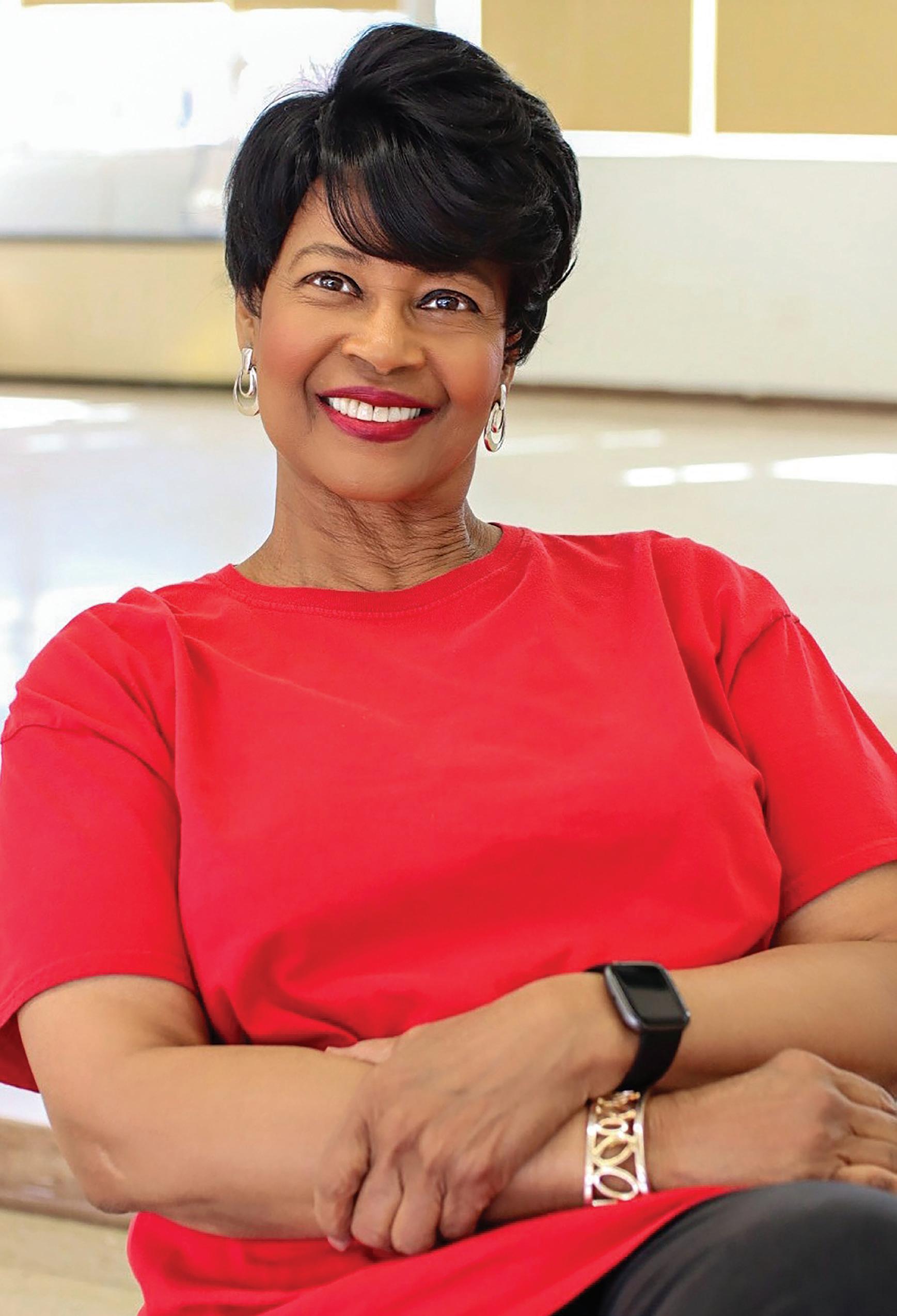
16 • OUR JACKSON HOME
Mona Lisa Lanier Loving Where You Live Through Dance
BY AVERY CHENAULT PHOTOS BY TAMARA REED MILLER AND COURTNEY SEARCY
“I just need a space to dance,” Mona Lisa Lanier said to me as she flicked on the lights of a former elementary school turned community recreation center. The room, once a classroom, is now a dance studio with mirrors and photos of dancers in brightly colored costumes lining the wall.
Lanier proudly pointed out her students and how much they’ve grown since these photos were taken.
I watched as Lanier repeatedly had the girls practice walking onto the dance floor gracefully until their form was right. She prompted a student to straighten her arms and asked kindly, “How was your day today? Good?”
Lanier teaches her students grace and precision and remains joyful and encouraging through every critique. She plays an integral part in teaching her students strength and confidence
and a love for the place where they live.
“I’m a Jacksonian,” Lanier said, as she shared with me more about the origin of the Mona Lisa Lanier School of Dance.
Born into a creative family, Lanier’s brothers, Farris Jr., Marlone, and Fenoye, were a part of a band originally called “The Jacksonians,” later known as Lanier & Co. As her brothers sang, Lanier used her gifts to choreograph for them. Lanier’s brothers eventually performed her choreography on Dick Clark’s hit television show, “American Bandstand.”
Her parents, Farris and Laverne Lanier, encouraged each of their children in their creative journeys, and Lanier eventually went on to perform in multiple ballets and now teaches others the joy of dancing everyday.
“I always wanted to dance,” Lanier said. “I have danced all my life.”
VOL. 9, ISSUE 1: COMMUNITY • 17

18 • OUR JACKSON HOME
A Jackson-native, Lanier was approached about teaching dance classes at Jackson Junior Arts and Humanities School after successfully choreographing a cheerleading routine for a group of students at Jackson Junior High.
A third grade teacher at the time, Lanier was surprised by the offer.

“I thought it over and thought it over and said ‘I’ll do it,’” Lanier said. “It was an honor.”
After teaching dance classes in the Jackson public school system for years, Lanier started the Mona Lisa School of Dance in 2017 and continues to give back to the community as she enriches the culture of Jackson. She currently teaches ballet, tap, jazz, hip-hop, liturgical, retro style dancing, African
folk, and line dancing to students of all ages.
Amidst Lanier’s diverse resume, she stays true to her Jackson heritage by choreographing many of her studio’s dances to the music of important Jackson artists such as Denise LaSalle, Carl Perkins, Gil Scott-Heron, and her brothers’ music, Lanier & Co.
By choreographing her dances to songs by Jacksonians, Lanier has exposed her students to new music that they have quickly grown to love.
“These kids say, “Ms. Lanier, I love Gil Scott-Heron!”
Lanier is not just teaching her students about the legacy of Jackson, she is adding to the history of this community. She is not only teaching her students proper technique and
VOL. 9, ISSUE 1: COMMUNITY • 19
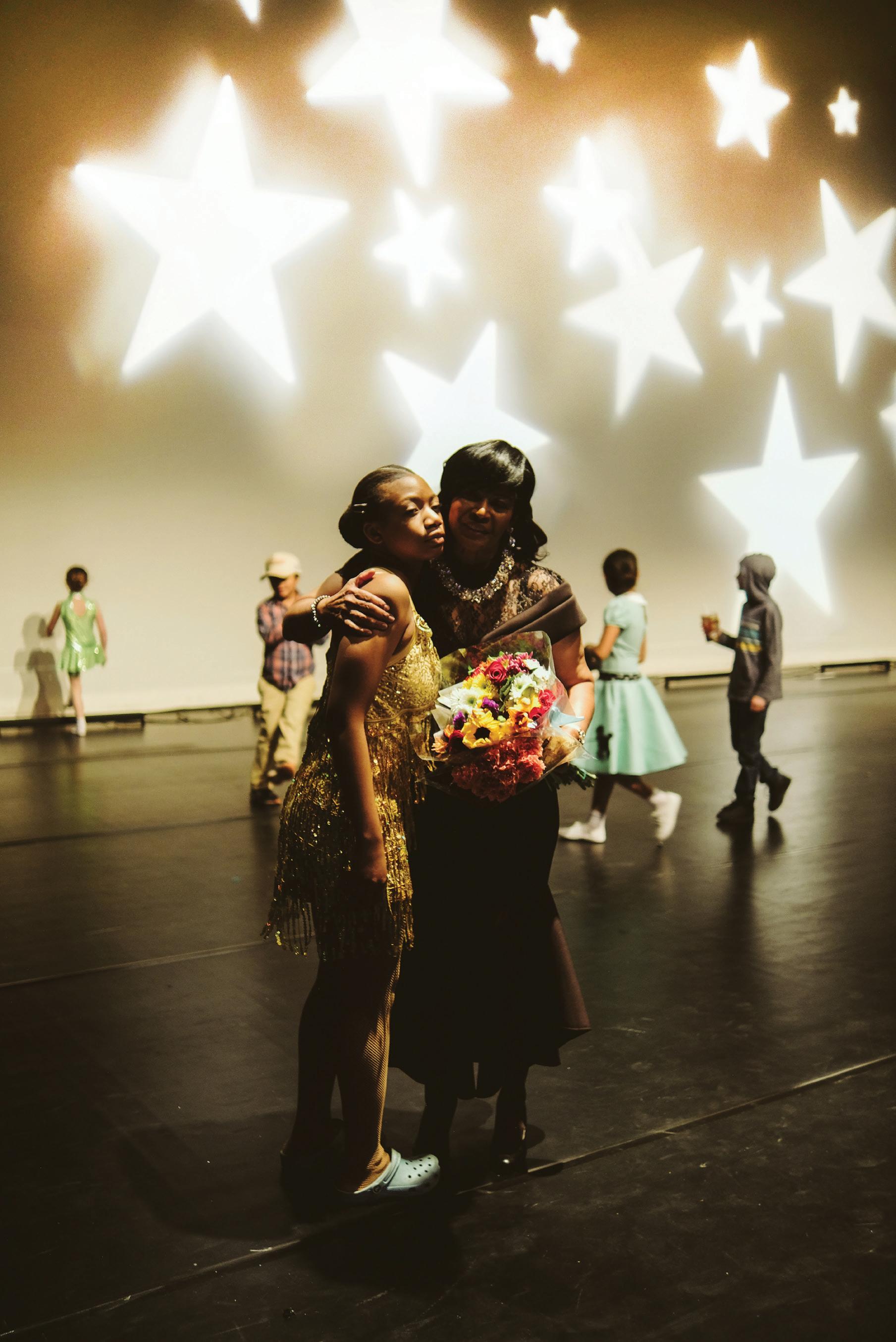
20 • OUR JACKSON HOME
“I want them to be empowered. They can be anything they want to be.”
they want to be.”
She speaks of her students with immense pride. She is proud of who her students are and who they are becoming. While many people in the dance industry desire to relocate to bigger cities, Lanier models that leaving a legacy doesn’t always look like leaving the place where you came from.
“I may not ever get to New York,” Lanier said. “But I can bring New York to Jackson, Tennessee.”
Through challenging seasons, Lanier continues to see the value in teaching dance to her students. Even through a cancer diagnosis and the difficult times that followed, she never let go of her love for dancing. Now a cancer survivor, Lanier continues to
love dance and pursues her passion
“At my lowest point when something is wrong, God always manages to bring that dancing to me,” Lanier said.
People like Lanier are essential in keeping creativity in Jackson alive and empowering the next generation.
As Lanier’s students round out another day of rehearsal, “Share Your Love with Me,” by Lanier & Co. plays from the radio in the corner.
The girls, dressed in pink tights and black leotards, strike the final pose of their dance routine. Their toes are pointed and arms placed gracefully above their heads, exactly as Lanier has taught them.
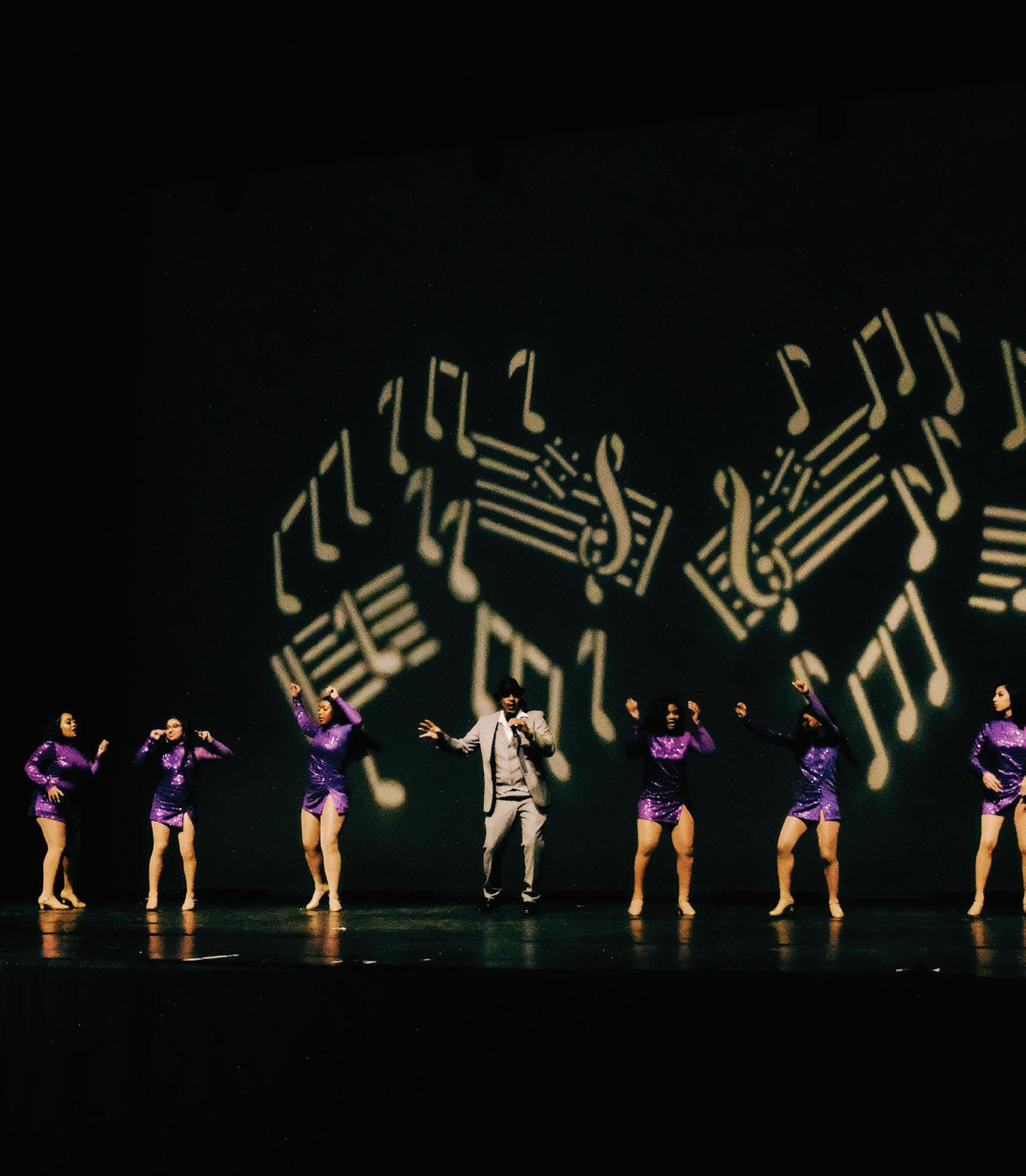
Their teacher beams with pride.
“My dream is a dream that came true,” Lanier said.
VOL. 9, ISSUE 1: COMMUNITY • 21
Placesof Connection
 BY LILY K. LEWIS
BY LILY K. LEWIS
22 • OUR JACKSON HOME
Growing up in Jackson, for me, has meant growing with Jackson. Over the course of my life, I have seen this beautiful city expand in so many ways: from new businesses to new opportunities to new people. Increased community involvement, diversity, and population growth have played a significant role in my experience with Jackson over the years; so many programs have been set in place to make Jackson a better place to live. But most of all, Jackson serves as a place of connection.
Places of connection are special corners of the world that make you feel loved and involved and excited. They are the places that make you most comfortable in the situations that make you the most uncomfortable. These places can be an art gallery, a library, a coffee shop, a bookstore, a school. It could be a park, a thrift store, or a restaurant. It could even be a home, and not necessarily your own. Places of connection are gatherings of community. Whether it be meeting up with your friends for coffee and shopping, fellowship at church, or attending a concert, there are myriad opportunities to spend time with people or get to know people in Jackson. However, recognizing places of connection requires awareness. As a child, I thought Jackson was a boring place to live. But as I grew older and my eyes opened wider, I realized Jackson is so much more than I could see. Jackson encourages diversity with the International Food and Art Festival, a massive celebration with booths selling goods from all around the world. The Christmas Tree Lighting at City Hall and the Christmas parade bring people together to celebrate the most wonderful time of the year. The
Farmer’s Market invites people to enjoy good food and support local farmers and vendors in the summer months, and the Amp offers a space for outdoor concerts, shows, and presentations. But the thing I love most about Jackson is the support the community offers to artists, performers, and to people in need.
I am seeing Jackson experience a rise in art and culture. Almost every weekend, there are events like poetry open mics, art gallery openings, symphonies, ballets, book signings, discos, photography sessions, concerts, and plays and musicals. Art is a place of connection: It is where we learn to better understand each other and the world surrounding us. Art has been an essential part of my life here, and it has been my joy to be involved in the arts community through writing, theater, and open mics. Although theater has acted as an outlet for me when I am feeling stressed or anxious, it has most of all taught me how to work with a team, be confident in front of a crowd, and laugh through challenges and mistakes.
Programs such as RIFA, the Salvation Army, and the Scarlet Rope Project aid unhoused people, recovering prostitutes, or anyone who needs a meal. It is easy to volunteer at so many of these places, and I am glad that I was made aware of these opportunities. For example, ComeUnity Café allows volunteers to work for an hour in exchange for a meal or asks you to pay what you can. This allows you to be more involved with your community and to develop a deep passion for those who are suffering and, furthermore, a love for everyone around you.
But to every city, every home, there is a push and a pull. I often look forward
VOL. 9, ISSUE 1: COMMUNITY • 23
to leaving Jackson to start college, to learn and love a new city in the way I have soaked up this one. And then I think about the baristas I call friends at Turntable Coffee Counter, the schools

I have walked through, the meals I have enjoyed at the home of cherished ones, and the love I see from everyone around me, and I know I will miss it.
But to me, that’s what makes it even more beautiful: knowing someone is moving to Jackson for the first time and seeing this city as something magical and full of wonder.
While I smile and wish them the best of life, I hope they breathe it all in, because it doesn’t get much better than this.
24 • OUR JACKSON HOME
COMPANION GALLERY
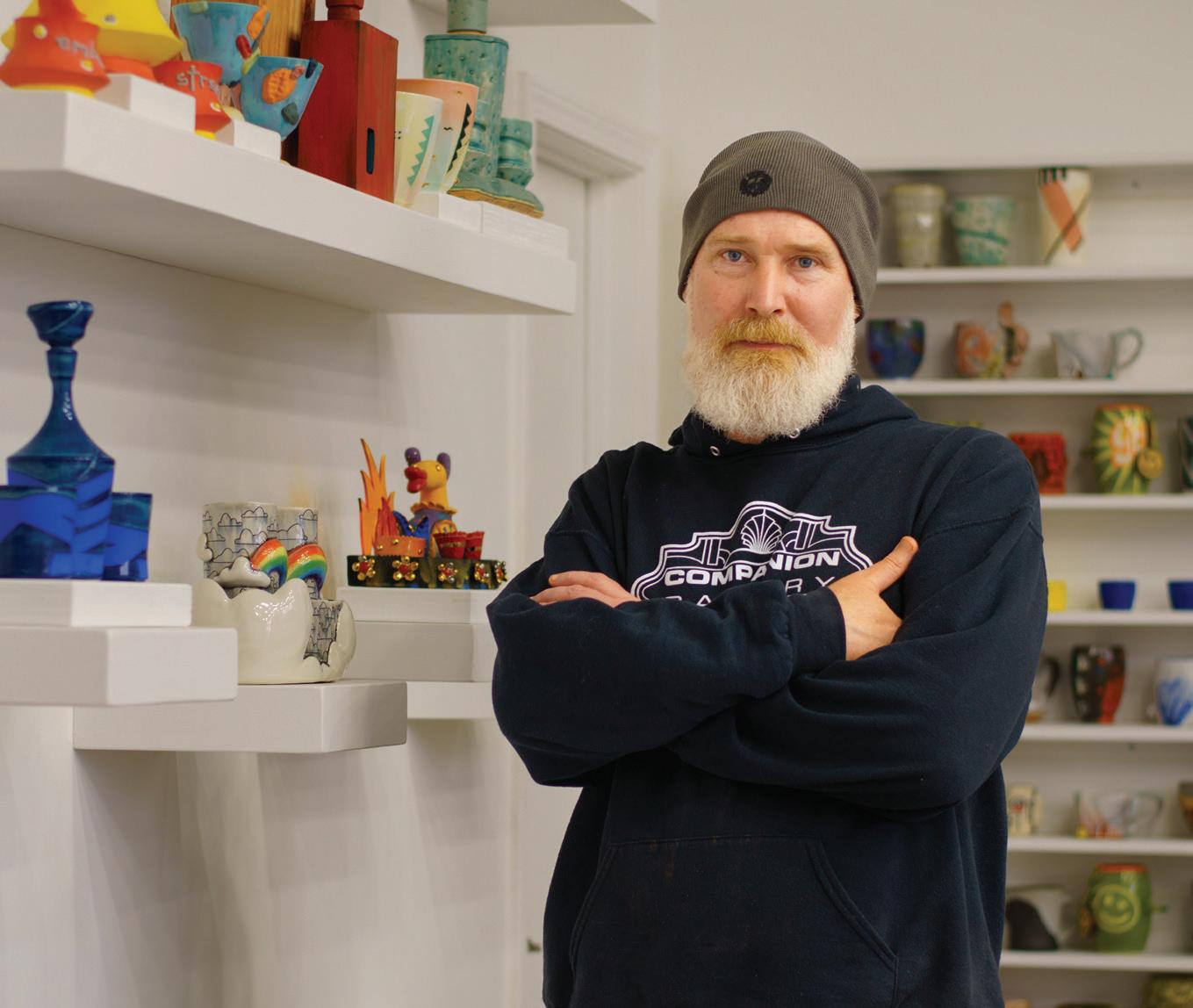
VOL. 8, ISSUE 2: COMMUNITY • 25
A Community Built On Clay STORY & PHOTOS BY ERIC ARCHER
It’s three-thirty in the afternoon when I walk through the front door of Companion Gallery and East Mitchell Clay. As I enter, I step into a gallery space. The lights are off, but that serves as little distraction from the room’s stark white walls adorned with small shelves that hold a kaleidoscope of ceramics. Every wall is covered. Display tables sit in the middle of the room, also adorned with collections of intricate clay pieces.
Light shines from an entryway across the room, leading into an adjoining space. I step in that direction, and as I round the corner, the difference between the calm gallery and this new room is striking. There are tables and surfaces and shelves everywhere. On those surfaces sit tools, and materials, and rags, and clay pieces in various stages of completion. This space is absolutely packed with tools for creation, and one thing made abundantly clear by these two rooms — this is a place for artists.
Across the room are two rows of potter's wheels. Judging from the sound of the room, somewhere above those wheels sits a speaker that fills the background of the space with 80’s pop music. In front of me and to my left is an alcove of workspaces occupied by three artists, all focused intently on their work. Another man stands in front of me and to the left, also intently focused on his work. He looks up at me as I enter.
Eric Botbyl wears a beanie and a black hoodie. The design on the front of the hoodie reads “Companion Gallery”. Contrasting the hoodie is Eric’s large white beard. He has a happy look in his eyes, and underneath the beard is a gentle smile, which
gives him an overall look of reserved kindness.
As I step his way, we greet each other, reaching out our hands to shake. After introducing ourselves, Eric gestures to the three men to our left, telling me these are Companion Gallery’s resident artists. He points in their direction and introduces each of them by name, Andrew, Juan, and Horacio. We exchange waves and “nice to meet you's."
Eric asks me if I want to sit outside for our interview. It was rainy this morning, and even now it's a bit overcast, but still it's probably warmer than it has been all week — a nice day to sit outside. He reaches down into a bin and hands me a towel. Dark spots on the cloth give me the inclination that its general use probably involves dealing with and cleaning up clay.
"In case the seats are wet," Eric says.
He leads me in the direction of a door on the other side of the room, past the potter's wheels and out into the damp air. We walk around to the side of the building. There's a patio space here with a few picnic tables. As we wipe off the seats and sit down at the table, I notice towards the back of the patio is a pavilion, and underneath it, a big concrete structure which Eric would explain to me is a large stone kiln.
Eric pulls a cigarette out of his pocket and puts it in his mouth. He lights it as he leans back in his chair. This space, Companion Gallery — it’s clear that this is Eric’s place in the world.
Eric’s story starts in New Jersey — on the Jersey side of Philadelphia. In the fall of 1996, Eric would leave his
26 • OUR JACKSON HOME

VOL. 8, ISSUE 2: COMMUNITY • 27
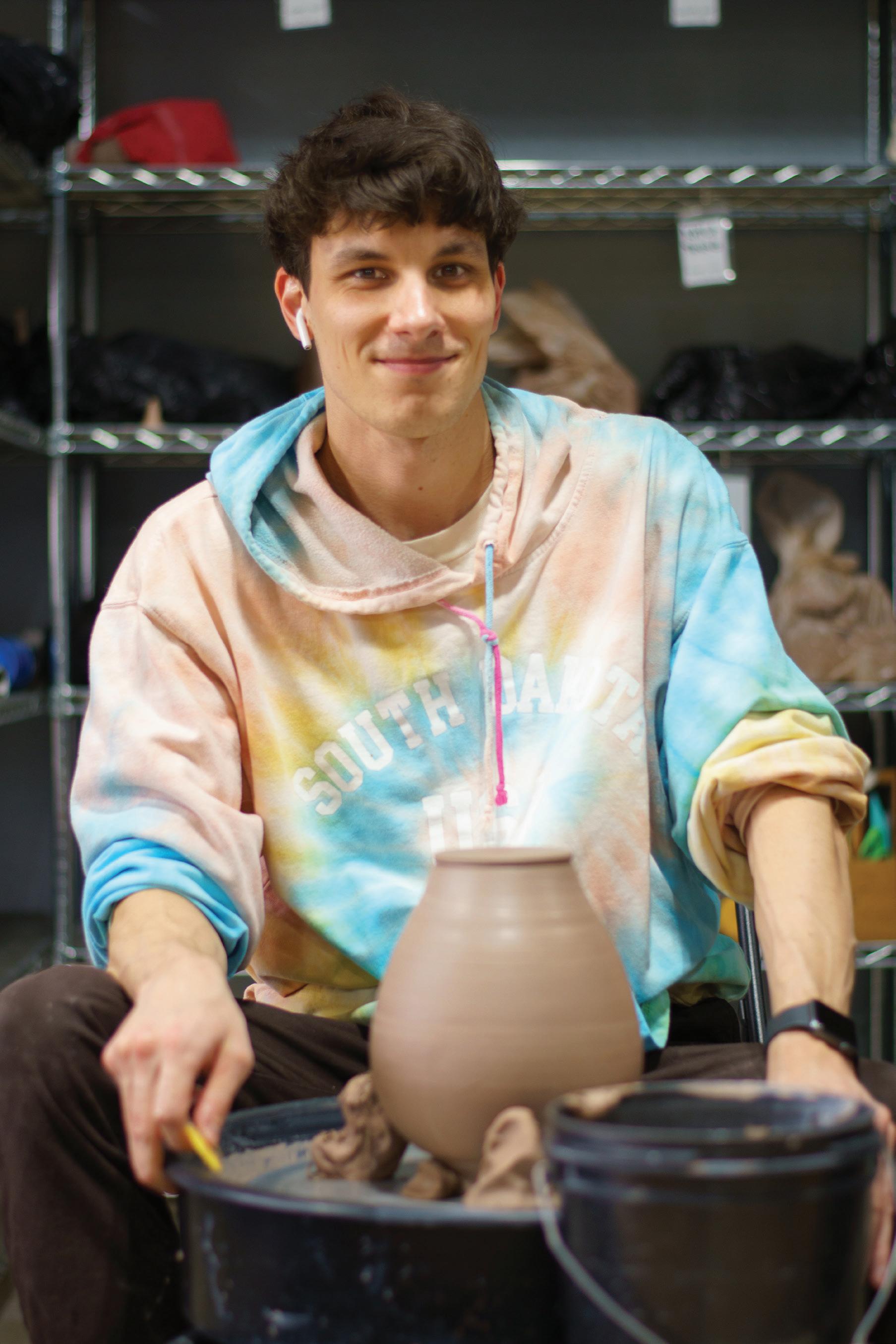
28 • OUR JACKSON HOME
home in Jersey to attend college here in Jackson, a place very different from the home he was leaving behind.
"Coming from a very urban area to a more like, rural town— man. I know some people called Jackson a city. I mean, Jackson's like a town to me." A town where he would spend his next four years of college before deciding to make the area his home.
"I came to Tennessee to go to Union, with the intention of studying psychology," Eric tells me. "So I drove 1,000 miles, and I went to the registrar and said, ‘I want to be a shrink. Sign me up.’ and they said all the intro to psych. classes are full, take an elective," he smiles.
Given the circumstances, Eric searched through his options and settled on an elective: Ceramics 101.
“I didn't know that I was gonna love it, but I loved it and I lived in the art department,” Eric says. “So I just, that's all I wanted to do was be in there. Weekends, I was in there. You know, if I didn't have class or work, I was in the studio.” It was something about being around ceramics that inspired him— being in the same space as the type of people who spent their time in the ceramics lab.
“Like the painting lab was very quiet — a lot of classical music. The photography lab was silent. The graphics lab, I had absolutely no interest in it, and then you'd go over to ceramics and like somebody was outside burning something, the music was cranked up, somebody was always making another pot of coffee.”
An energy inhabited the ceramics lab day in and day out — an energy that Eric loved, but that wasn’t all of it. There was something about the clay.
“You know, it's heavy. It's wet.
It's dusty. It's dirty. You’re lifting and grunting and cutting— wedging. I love the physicality of it,” he says, “There's also kind of an elegance to it once you get on the wheel.”
An unfathomable amount of effort must go into mastering an art like this, but as Eric puts it, “There was a lot to love.”
Oftentimes being an artist is a less than easy way to make a living, and oftentimes it can be downright hard. Upon exiting college, Eric was not going to be an exception to this rule.
“Back then I couldn't even fathom something like this,” he gestures around at the patio, and towards the gallery beside us. “So when I graduated, my wife Jill and I got married, and I needed a job. So I went and hired on over at Morris Nursery.” He tells me how his first month working there he spent landscaping — digging holes, mulching, planting shrubs — whatever they asked him to do.
“But it took about that long for me to really start missing pots.” He smiles. “So I went and spoke with the owners, Dan and Debbie Morris, and I asked them if they would be at all interested in starting a pottery studio there at the nursery, and Mrs. Debbie said—,” Eric looks up at the sky. I can see his happiness reminiscing on this moment. “She said, ‘Well, it's about time.’ She said, ‘We've always wanted to do something like this, and when you handed in your resume it was ceramics this and pottery that,’ and she said, ‘honestly, we've just been giving you stuff to do until you came around and said something’.”
So often it’s these breaks, these moments of kindness that seem to carry people the farthest. In many ways, the studio that Eric started in an
VOL. 9, ISSUE 1: COMMUNITY • 29
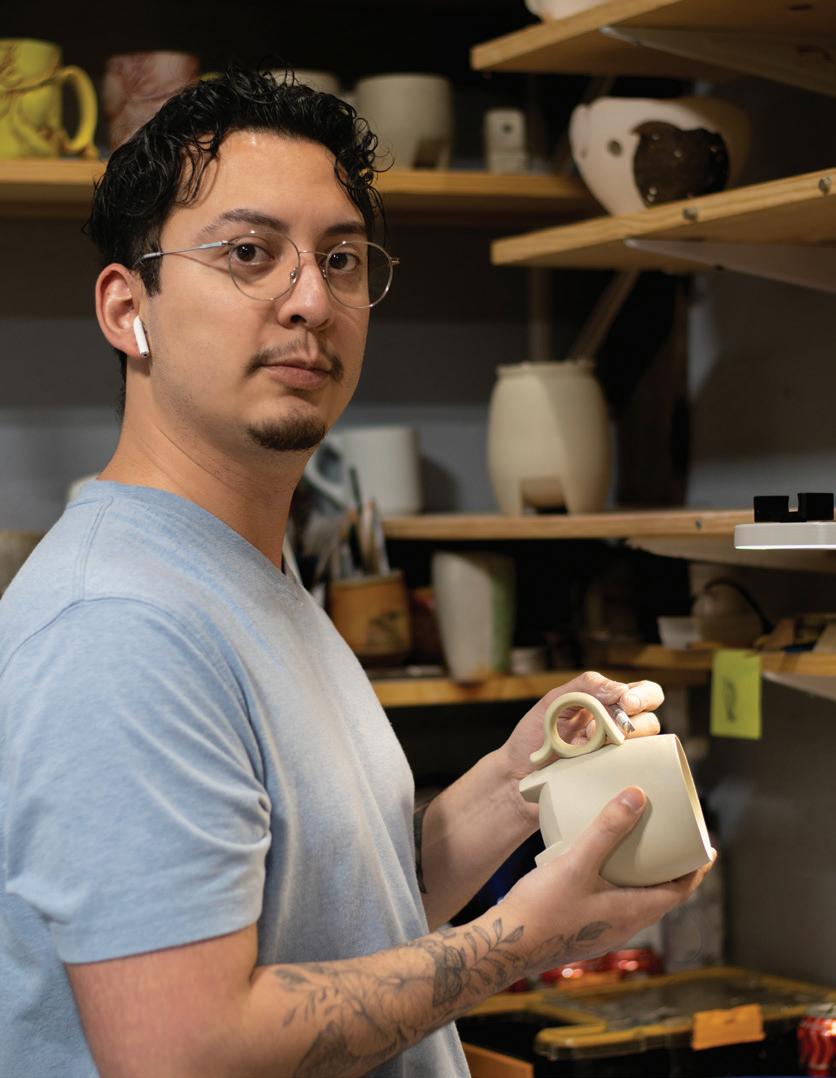


"We're a somewhat small operation, and each one of us feels like a big part of it."
JUAN BARROSO
HORACIO CASILLAS
30 • OUR JACKSON HOME
ANDREW
CLARK
old potting shed behind the nursery was the earliest glimmer of what he would one day turn into Companion Gallery.
Eric tells me he would spend six to seven years making pottery behind the nursery before being offered a new location in an old barn amongst the newly planted vineyard at Crown Winery. One of the owners, former Miss Tennessee Rita Howard, had paid a visit to his shop at the nursery, and was impressed with what Eric had to offer.
“She looked around and she said, ‘You know, Peter and I have just planted a vineyard in Humboldt, and we have this barn up, like in the middle of the vineyard that we don't know what to do with.’ She said, ‘You should come look at it’.” So he did— he took a look, and even though the space would require a hefty amount of renovation, he decided to move his shop to the vineyard. “as part of that, we decided to create like, a little like, show space up front— which I'd never had before. And I was selling most of my work, like I would travel to go do craft fairs.”
This was new to Eric. A way to showcase his work right there at his studio. Companion Gallery had truly begun to come together.
Companion Gallery and East Mitchell Clay now has its own space at 2600 E. Mitchell Street in Humboldt, but as Eric points out to me, the property still backs right up to the vineyard. It’s a great place to be— a place that seems to make Eric happy, but no journey is ever a simple one, and getting from Union’s ceramics lab to here was less than easy.
“It's just, it's a weird way to make a living, and so it's taken a lot of hours. Like my friends used to always say, ‘you
know, your boss is a jerk’,” he laughs. “You know, because of working long hours. And that's me, you know, but just knowing that like, this is how much it takes to do this. So there was a long period of time where I had to kind of carry that burden myself.”
It makes you wonder if Eric ever stopped to question if all the long hours and hard work were going to be worth it.
“I don't know if my question was, ‘Is it worth it?’. For me, it's always worth it. Just because it's— it's in me to do this, but I think figuring out ways to make it financially viable. It's a big question for definitely the first ten years.” It was a struggle to figure out how to make it all work and support his family at the same time, but Eric kept pushing— this is where he was meant to be.
After years of work, this is a way Eric has found to use Companion Gallery to give back. One thing Eric insists on during our interview is that I talk to the resident artists. To him they’re one of the most important parts of what he’s doing at Companion Gallery.
Andrew Clark sits at one of the potter's wheels inside the studio. He leans forward in his chair using his body weight and his fingers to form together and shape brown clay into a curved vase.
“It's kind of hard when you finish college with a degree in ceramics, or any art— maybe anything, even English or lots of things. It's like, ‘Well, what do I do now?’” Andrew rests his hands gently on the clay and looks up at me. “It's kind of — the residency program here is kind of a trade-off. Trying to trade off hours for a studio space for younger, kind of emerging artists is the idea I think that Eric has.
VOL. 9, ISSUE 1: COMMUNITY • 31
So in exchange for a place to fire kilns and a place to work, all that we put in is ten to twenty hours a week of work in exchange for those things.”
All of the resident artists have their work areas covered with clay and pottery and tools for creation. The shelves above their workstations are teeming with beautiful, intricate pieces of ceramics in various stages of completion. It's work that exudes the amount of skill and practice involved with crafting at this high a level. Despite their clear expertise, each of them tell me how much it has meant to be able to work at Companion Gallery and to work with an experienced artist like Eric.
Horacio Casillas shows me the pieces on his workbench. They’re intricate vases and goblets, with curves and sharp lines. They’re like cathedrals condensed down into small ceramics. He holds a chalice in his hand as he talks to me.
“I think that with our trade, there's a lot of things involved. So having a wheel, having kilns, having just the studio space, materials — it's hard to come by. And so Eric, having already established a place like this makes it easy to continue what we're doing, especially if we don't have, like, the capital to buy our own wheel.” He sets the chalice down on the work table.
“I've done residencies in the past — and they're all over the U.S. Like, there's different types, and things like that, but yeah, I feel like this community is a little bit tighter,” Horacio says, “It's
like, we're a somewhat small operation, and each one of us feels like a big part of it."
Juan Barroso echoes these thoughts as we sit across from each other, looking up at the work he has neatly displayed on the shelves above his desk.
"Eric provides some of the materials, the glazes, the firings. I don't have my own kilns yet. So I wouldn't be able to finish the work without this residency." Juan adjusts the chair he’s sitting on. "And there's also some like, critiques— unofficial critiques, and so I need to talk to these guys," he gestures to the other residents, "So there's, there's growth there, just from being able to talk to other people about the work— suggestions." Juan smiles. "Also working on, on people. If I was back in my home just in my garage, I wouldn't be able to practice like networking and trying to talk to people."
So the residents help Eric teach classes and keep up the gallery and the studio in exchange for the tools they need, but perhaps more importantly, between the four of them, they get to be part of a community — a community that is seemingly ever-expanding.
"We are very much focused on emerging artists. Young people in their late 20s and 30s who are coming up. There's always someone new to discover. There's always exciting new work being produced. I'm always on the lookout for you know — across the field of ceramics — for who is doing something exciting — original work
32 • OUR JACKSON HOME
"I mean, art is good for everyone. Whether it's a career or not, it's tapping into a certain part of ourselves. So I think it's really important to not lose touch with."
that I'd like to show in this area and beyond."
Eric tells me this, leaning forward in his seat on the patio.
"It's an exciting prospect. I mean, art is good for everyone. Whether it's a career or not, it's tapping into a certain part of ourselves. So I think it's really important to not lose touch with." He nods his head. "And as far as the studio goes, I mean, every person who walks in here, they're here for different reasons. You know, and everybody seems to — they start as students, and then they become friends. You know, when you get to— you get to know people like that."
He nods his head again.
"Then the students become friends with each other, and that spills outside of this studio."

I pack up my things as I’m getting ready to leave the gallery. In the background, I notice the sound of the radio still filling the space. "Material Girl" by Madonna spills out through the radio’s speakers. It’s irony, I think— it makes me smile at least— and perhaps a writer’s mind seeks to find meaning in anything it can, but still.
I am near confident that when Madonna refers to a material world, the material she’s referring to is not clay — but clay is the material Eric Botbyl has built an entire community on, and there seems to be no shortage of people wanting to experience all that Companion Gallery has to offer. The exciting prospect? The more people experience it, the more a passion for art spreads into the world around them.
VOL. 9, ISSUE 1: COMMUNITY • 33
THIS SPACE AND TIME

34 • OUR
JACKSON HOME
HAVNER'S FRAME SHOP
BY TRISTA HAVNER
My daughter is nine years old and no one can teach me a lesson better than she can. Last week, she came running in the house from playing outside and slammed the door behind her. She proceeded to stomp down the hall to her room, huffing and mumbling for the duration of her journey. I followed close behind her hoping to diffuse whatever situation had caused such a visceral reaction in her, but she met me at her bedroom door with three words: “I need time.” As I stood outside her closed door, I could hear her opening drawers and slamming them shut, dumping markers and colored pencils onto her desk while she inhaled deeply, over and over again. Then, nothing. Quiet. I stood in the hallway for a bit before retreating to the kitchen to honor her wish for time.
Roughly ten minutes later she emerged with a piece of watercolor paper clutched tightly against her chest and her cheeks tear-stained and red. I knelt down and asked if I could see what she had created, and
she reluctantly opened her fingers and showed me a portrait. Of her. She explained every detail and showed how each line was created with intentionality, each color a symbol of how a misunderstanding with her brother had made her feel dejected and angry and vengeful and sad. What she could not express in words she processed through art. And, in that moment and in that portrait, I saw her. I understood her without context of her situation.
When my husband Charlie and I started dreaming about the future of the frame shop that has been in his family for three generations, I always knew that there was no future, for me, without including gallery space in some capacity. Custom framing would always be the major part of the Havner’s equation, but I simply could not see a way to move forward with our version of the shop without a way to bring our community together in a meaningful way, and I knew art was the ideal vehicle to do it. Concepts became long conversations that
VOL. 9, ISSUE 1: COMMUNITY • 35
became mood boards that became a little black notebook full of space planning ideas until all of our ideas and conversations and sketches were realized in our new location at 105 North Church Street.
If I’m being honest, the gallery was and has been such a learning curve for me, and one we continue to learn as I go. After all, I have a degree in history and have very little experience planning gallery shows and working with artists so this has been a real “fake it ’til you make it” situation. But, as any good historian does, I have researched galleries in cities like Jackson and brainstormed ways to include all of our artists, and really poured myself into creating a space that means something, a place where our neighbors can feel safe and grounded and understood. A place that feels like it is for everyone and celebrates the diverse cultures and tastes and dynamics of a community Jackson’s size. Charlie and I want every gallery show to be quality, of course, but mostly we want every show to speak to every person who sees it in ways that make them feel seen and known in some small way.
Which brings us to the show planned for the month of May, one
we are so excited about that we can hardly keep from gushing about to every unsuspecting customer who enters the shop. Every show up to this point has been a major success, and we have stood back and watched as neighbors who were previously strangers make connections during opening nights, exchanging business cards and drink recipes. It has all been such a wonderful and rewarding whirlwind. May’s show is incredibly special to me, because it was born from those little moments kneeling on the kitchen tile, trying to understand my daughter as she processed her big feelings through a self-portrait. After I tucked my children into bed that night, I was struck with how much I learned about my own child through a quickly drawn portrait. That portrait opened the door for understanding and gave her space to process what she could have never expressed otherwise. I sat on the couch that night with my little black notebook and feverishly scribbled ideas about theme and layout for the May show. I wanted our community to experience a taste of that.
The theme for the May gallery show, “Space-Time”, poses this question: what does it look like and
36 • OUR JACKSON HOME
After I tucked my children into bed that night, I was struck with how much I learned about my own child through a quickly drawn portrait. That portrait opened the door for understanding and gave her space to process what she could have never expressed otherwise.

VOL. 9, ISSUE 1: COMMUNITY • 37
feel like to be you in this space in Jackson, Tennessee, and in this moment in time? The gallery will be like a visual timeline and viewers will be able to journey through their neighbor’s lived experiences in the gallery. The front of the gallery will be filled with art from some of our youngest neighbors, then as viewers walk further into the gallery, art from local middle and high school students, then each age decade will be represented until viewers come to the back on the gallery, which will feature pieces from our wisest and most seasoned neighbors. The hope is that viewers leave with a better understanding of their neighbors and a sense of belonging to their community.
Art is a fantastic way to bind experiences and people and my hope for this show is to do just that. And here is the most beautiful part of this show: space-time is the intersection of space and time, but space and time can be measured differently by the measurer. Even so, all of those interpretations of
time and space are woven together, like a big, beautiful blanket. Like the universe. Like a community. Maybe even for just one month, we can make a space-time blanket at 105 North Church Street that provides understanding and belonging. That’s the job of art, anyway. Our hope for the month of May is that this display of self-portraits provides small windows into who our neighbors are. We have all been collectively living through one hard season after another and I am under no illusion that coming to an art show will fix all that collectively ails us. All healing starts with an understanding — of ourselves, of our situations, of our realities, and of our communities. What a gift to be understood and to understand through art because it means that we do not face space and time alone and art has the power to hem people in, and that is all we have ever wanted with this gallery. To provide a place for people to experience and commune — and art is a fantastic vehicle for community.
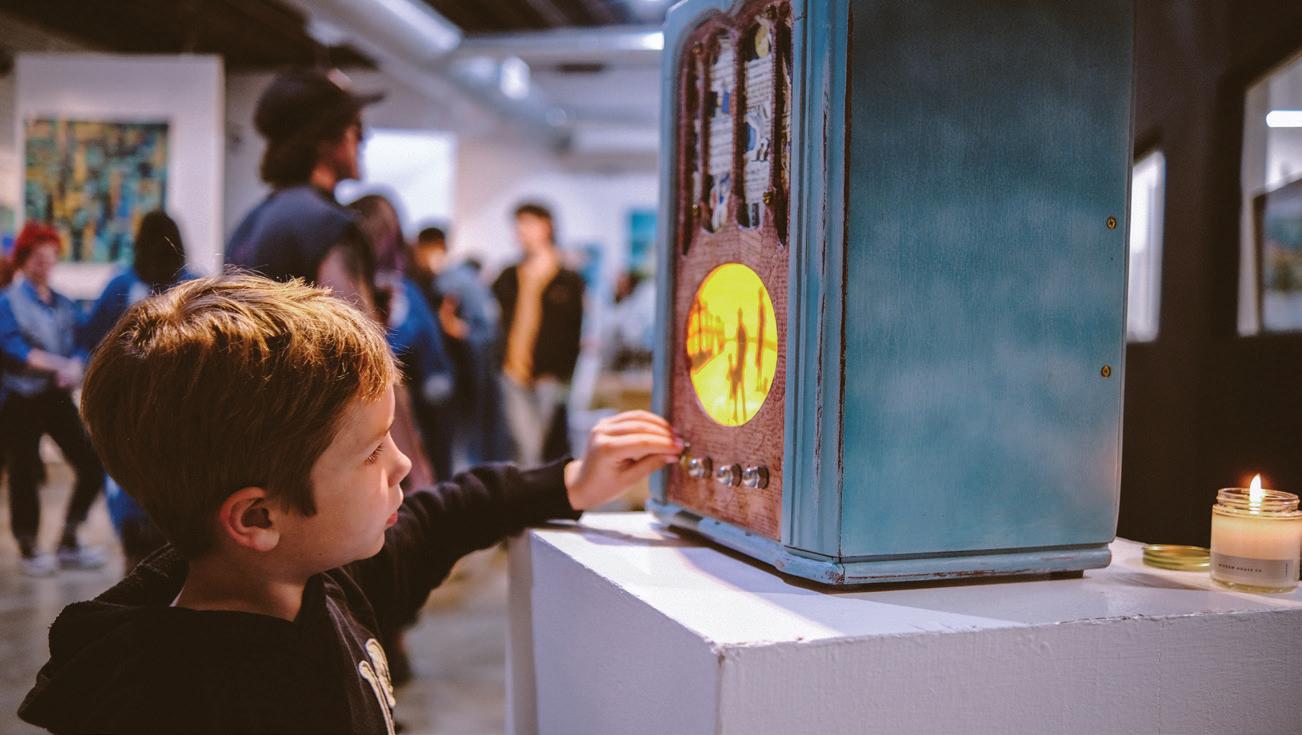
38 • OUR JACKSON HOME
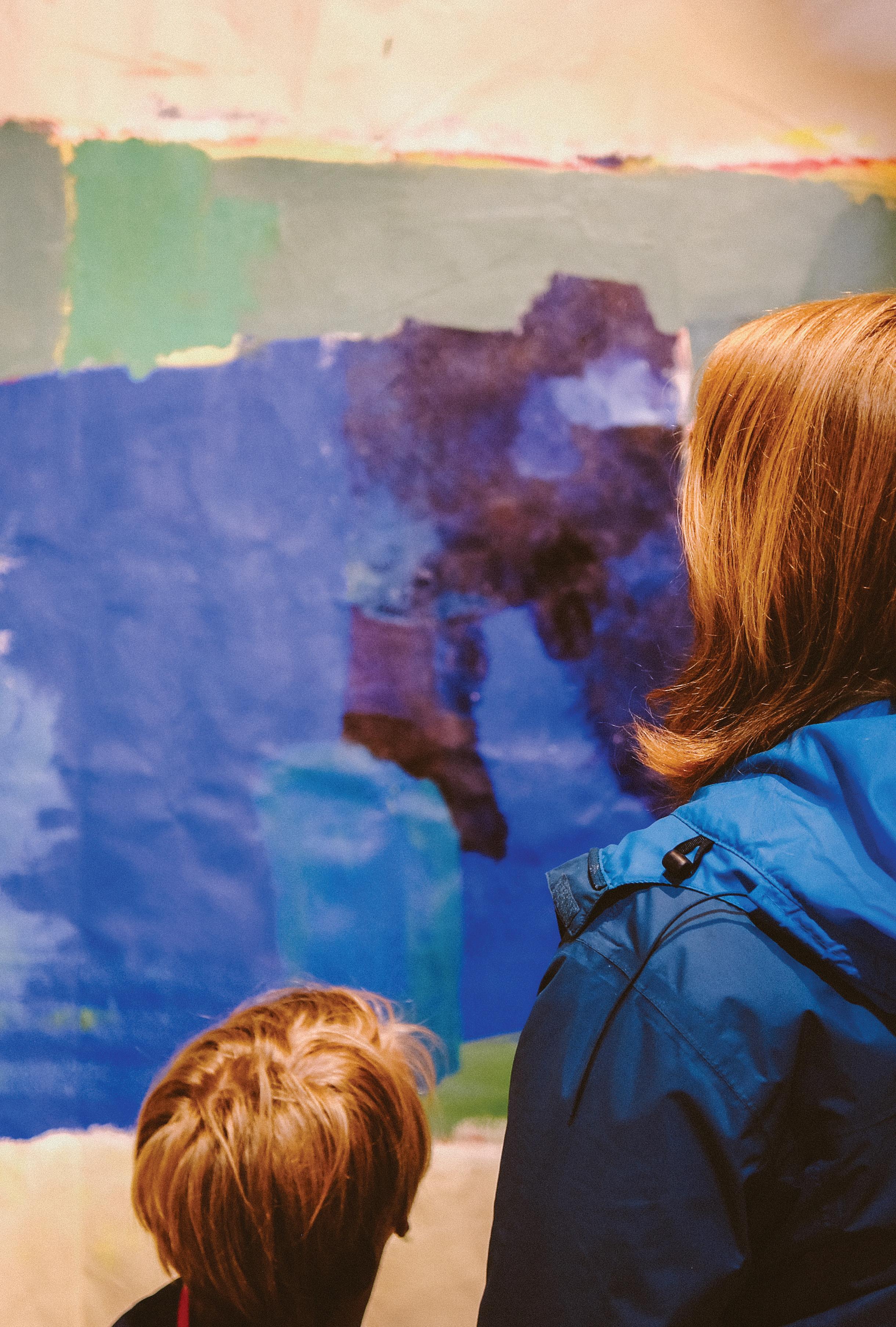
VOL. 9, ISSUE 1: COMMUNITY • 39
All healing starts with an understanding — of ourselves, of our situations, of our realities, and of our communities.
HOME The Before & The Now 家
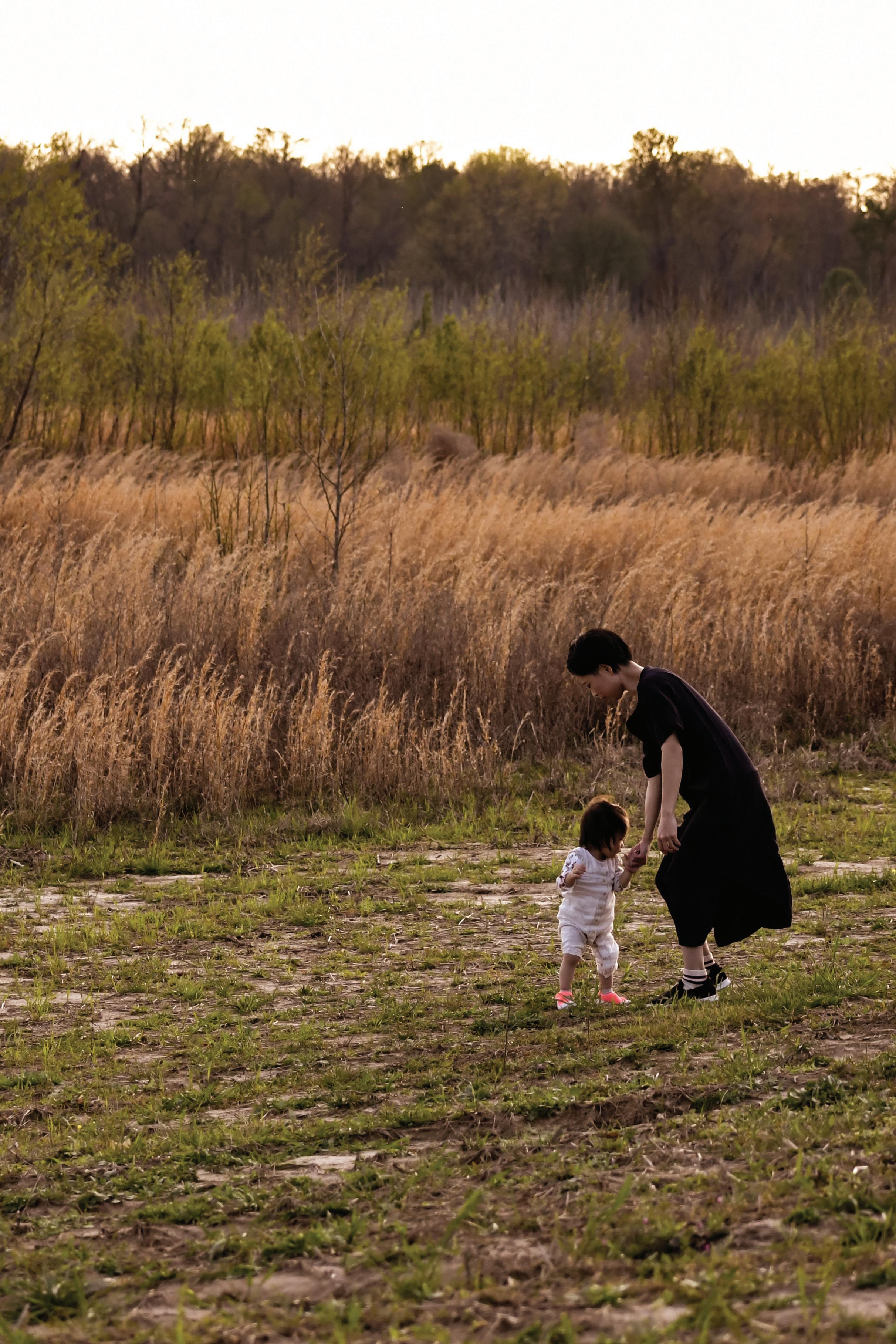
40 • OUR JACKSON HOME
BY HANNAH M. GORE
Dedicated to the Japanese women , the mothers, the daughters, the sisters, and the friends who have moved overseas to come and to live here and build a home in Jackson, Tennessee. You inspire our community more than you know.
As our city has grown, there has been a sort of migration of international families and individuals to Jackson. Of these different people who have ventured overseas to temporarily build a life here, the Japanese community in Jackson is one group that has seen significant growth in the past decade. This growth has flowered into a thriving community that is impacting the landscape, growth, and development of Jackson, Tennessee, and can teach our city valuable lessons about both place and culture. Leaving everything that you have known for a vacation abroad is exhilarating, but moving 14 hours across the ocean to become a part of a country, a city, and a culture that is foreign to you takes bravery. The definition of “home” becomes blurred, as “home” is now an in-between. It is where you are and where you were before all at once. For many families coming from Japan, there is a sense that “home,” which was once a steady and consistent thing, is suddenly disturbed and uprooted by a change in current location. Traditions are not the same,
and the people value different things from place to place when shifting from a country such as Japan to a small city in America like Jackson.
Over the past few years, I have had the privilege of meeting and doing life alongside some of the wives and mothers from these families. Some are newlyweds, some are seasoned mothers of multiple children, and some are awaiting the birth of their very first child. The journey here to Jackson from Japan is an exciting thing for many of these women, but it does not come without hardship. Daily life activities that were once simple are now difficult due to language barriers and culture differences. Despite the many hardships they face, these women have stepped confidently into life in Jackson, linking the culture of their country to their life here. The richness of each woman’s cultural background and heritage combined with an eagerness to thrive in a culture vastly different from what they are familiar with brings together both past and present to showcase the beauty wand vibrancy that is the concept of home.
VOL. 9, ISSUE 1: COMMUNITY • 41
sea to land mother and matriarch women and warmth we hold our heritage close to our hearts singing a song of migration and home home is two-fold when you are caught bridging a thousand miles of rocky shore and a landscape more open than the eye can see it is a dance and a balance of a child in one arm and confidence in the other mustering up the courage to walk when all you yearn to do is run

42 • OUR JACKSON HOME
as days stretch to months home is both yoshino cherry trees and southbound freeways, golden flatlands stretching on either side
home is more than four walls it is in the daffodils that bloom unprompted it is in the strength of a maple in a spring thunderstorm bending but not breaking
home is humid tennessee summers and breezy red autumns farmer’s market saturdays and tomatoes bigger than your head and a man in blue jean overalls asking how you are just because he felt like it

VOL. 9, ISSUE 1: COMMUNITY • 43
home is strength to prevail against the winds that threaten to break that which we hold together it is bluegrass in the evening rockabilly in the afternoon and soul on a sunday morning
home is a becoming and a letting go home is an anticipation and a longing
life becomes a mix of yearning a desiring, a tender memory of a home-cooked meal salty seafood, soy sauce, a bowl of rice a trip to okinawa, the warmth of a kotatsu in winter the way that the cat on the street corner greets the passerby daily the sunlight streaming through a half-open door
home is a salty-sweet breeze laced with melancholy beckoning simpler times, and days of strolling down weathered sidewalks or familiar subway platforms or watching the monsoons in autumn, an invitation to winter

44 • OUR JACKSON HOME
home is hard now with simple things becoming something painstaking there is a pondering, a yearning for a time when the cashier at the convenient shop wasn’t the most difficult part of a day and the waiting room of a doctor’s office didn’t feel like a reason to feel defeat but despite it all, home isn’t as lonely as it was after the arrival like seeds bursting open to yield a carpet of green after a long winter, there is awakening and home becomes more than just what is behind home becomes what is also ahead
day by day, there is a feeling that grows it wraps itself around weary shoulders a balm to soothe the days where home is no more than a big room

VOL. 9, ISSUE 1: COMMUNITY • 45
home is a feeling that is found in moments where the room is full and there is laughter and words of all languages mingling and dancing, tying everything together
the days are long the words are hard but the persistence is plentiful
these women are something of steel laced with the courage to soar like the stars they love they gather they make and mend coax and craft and build a life despite the feeling that home is only what came before they are mother and matriarch women and warmth their stories stretch thousand of miles across oceans to the here and now singing a song of migration and home.

46 • OUR JACKSON HOME
A Measure of Love
BY ELVIA TREJO
PHOTOS BY CARI GRIFFITH
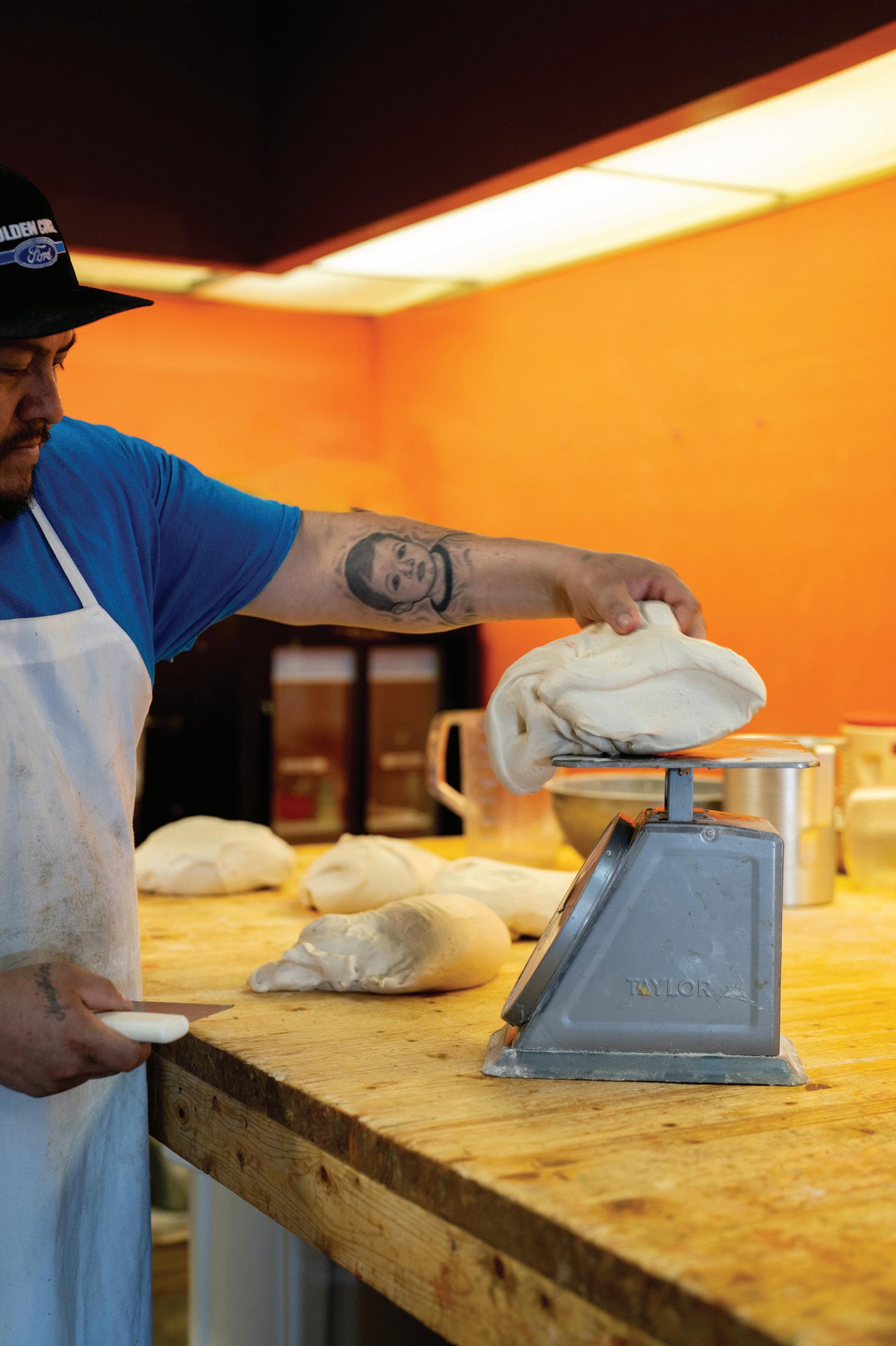
VOL. 9, ISSUE 1: COMMUNITY • 47
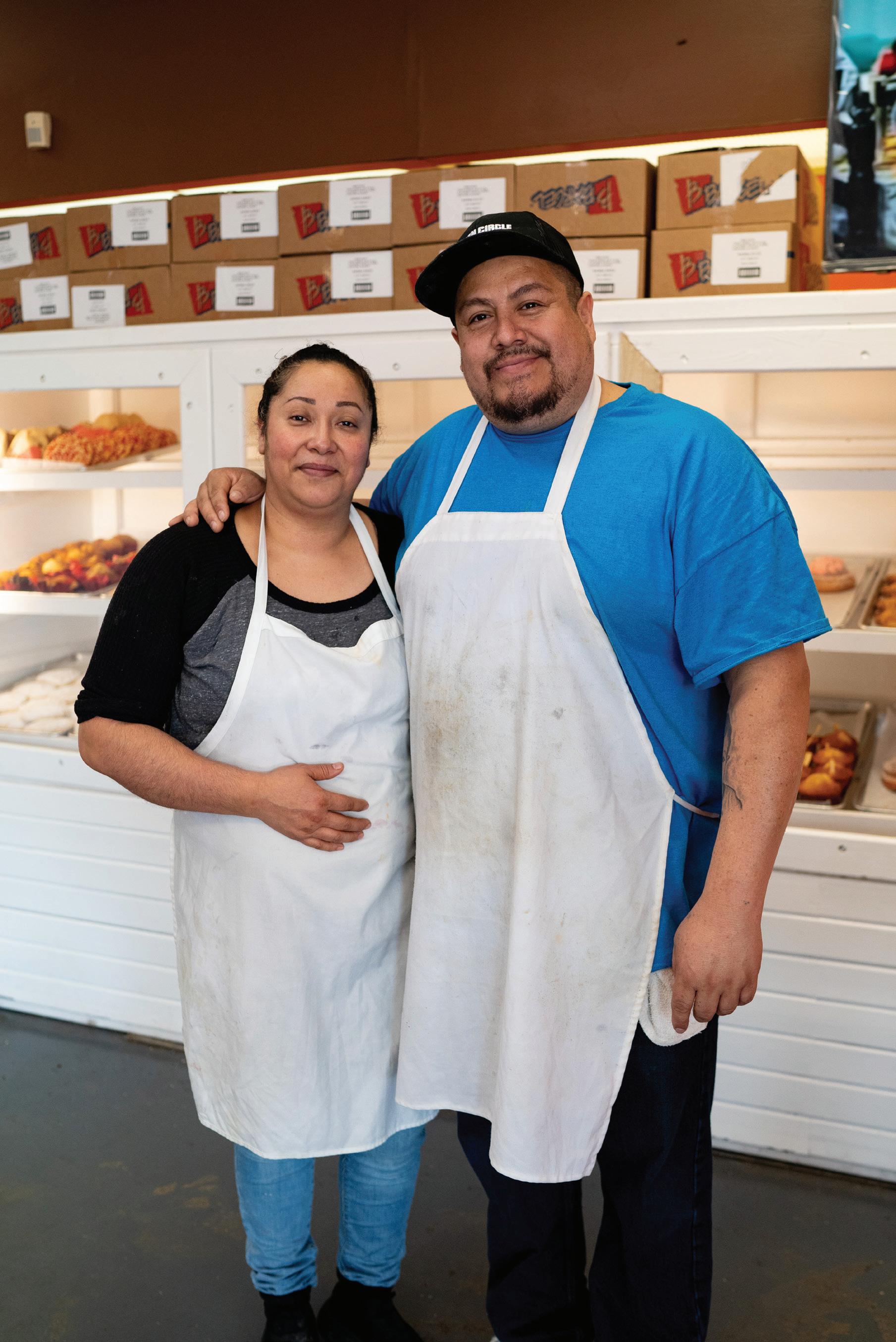
The Molina family has already made a huge impact on the Latino community in Jackson in just two years of living here. They proudly opened the first and only Panaderia in Jackson, La Panaderia El Triunfo, a family-run business that holds deep significance to them. Ismael, the dad and owner, learned the art of baking as a child, a skill and talent that has been passed down through generations in his family. Isamael is now carrying on that tradition as the fifth person in his family to open a Panaderia in the United States.
When the Molina family moved to Jackson, they saw a need and desire for a Panaderia, and they were eager to fulfill it. The family, consisting of Ismael, Angelica (mom), and children Jazmín, Jimena, Génesis and Jorge, all work together, the children working after school and on weekends to make the bakery a success. Originally from Tonala, Jalisco, Mexico, the Molina family has strong ties to their culture, and their recipes are family treasures that have been passed down for generations.
Ismael and Angelica want the Jackson community to know that they are here to serve and build community. Their bakery is not just about selling bread; it's about breaking bread and building friendships, creating a sense of home for everyone who walks through their doors. They believe it's important to pass down their traditions to their children so that their culture continues to thrive. When you enter the bakery, you’ll pick up a red tray and a pair of tongs, and head over to the handmade cabinets that are piled high with pastries of all shapes and sizes. They offer conchas, manteccadas, novias and more. Like all of their pastries,
La familia Molina ya ha tenido un gran impacto en la comunidad latina de Jackson en solo dos años de vivir aquí. Con orgullo, abrieron la primera y única Panadería en Jackson, La Panadería El Triunfo, un negocio familiar que tiene un profundo significado para ellos. Ismael, el papá y dueño, aprendió el arte de la panadería desde que era niño, una habilidad y talento que ha sido transmitido a través de generaciones en su familia. Ahora Ismael continúa esa tradición como la quinta persona de su familia en abrir una panadería en los Estados Unidos.
Cuando la familia Molina se mudó a Jackson, vieron una necesidad y un deseo de tener una Panadería, y estaban ansiosos por cumplirlo. La familia, compuesta por Ismael, Angelica (mamá) y los hijos Jazmín, Jimena, Génesis y Jorge, todos trabajan juntos y sus hijos después de la escuela y los fines de semana para hacer que la panadería sea un éxito. Originarios de Tonala, Jalisco, México, la familia Molina tiene fuertes lazos con su cultura, y sus recetas son tesoros familiares que se han transmitido durante generaciones.
Ismael y Angelica quieren que la comunidad de Jackson sepa que están aquí para servir y construir comunidad. Su panadería no se trata solo de vender pan; se trata de compartir el pan y construir amistades, creando un sentido de hogar para todos los que cruzan sus puertas. Ellos creen que es importante transmitir sus tradiciones a sus hijos para que su cultura continúe prosperando. Cuando entras en la panadería, tomarás una charola roja y unas pinzas, y te dirigirás a los gabinetes hechos a mano que están llenos de pan de todas las formas y tamaños. Ofrecen
VOL. 9, ISSUE 1: COMMUNITY • 49
Their bakery is not just about selling bread; it's about breaking bread and building friendships, creating a sense of home for everyone who walks through their doors.
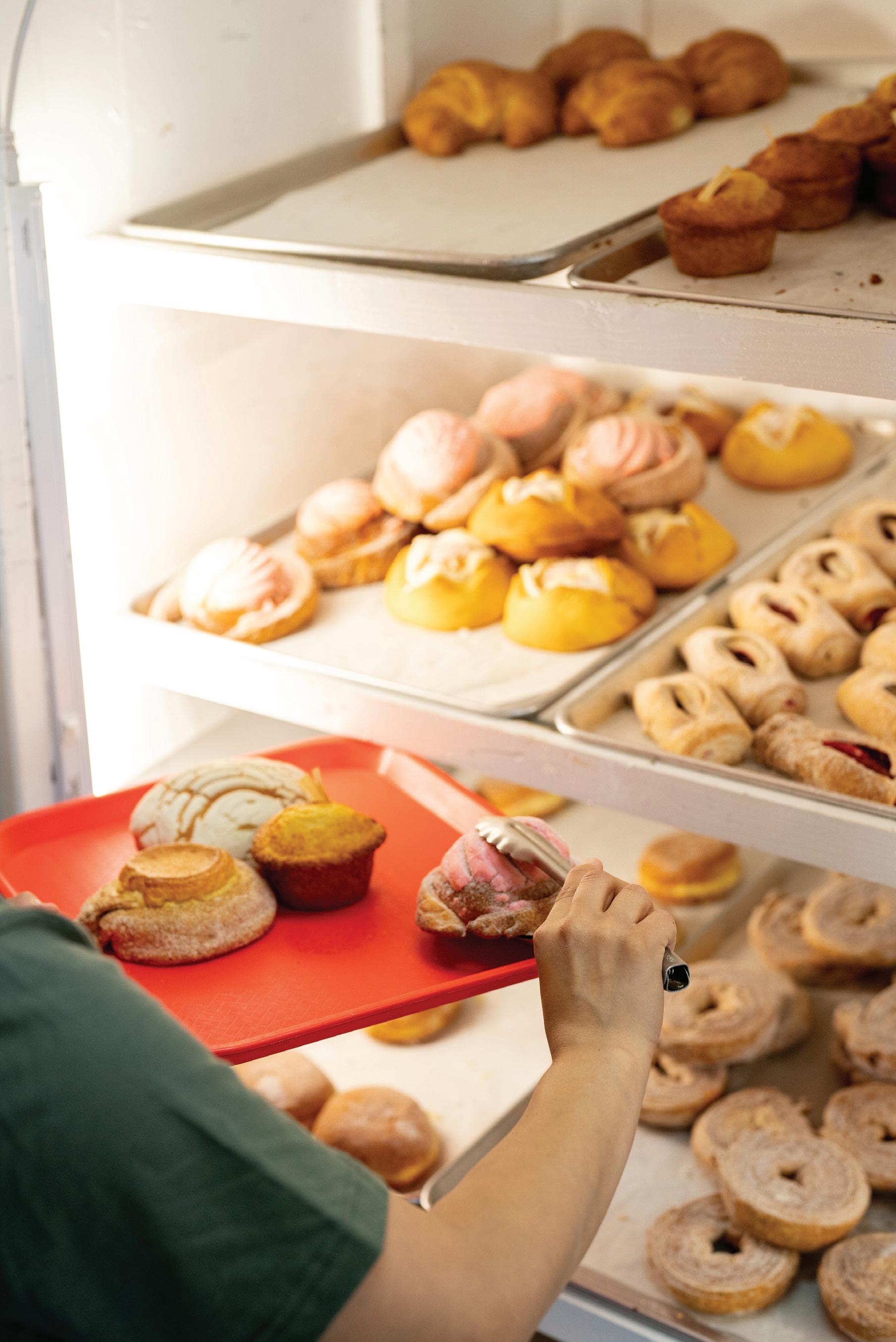
50 • OUR JACKSON HOME
their scratch-made bolillios are skillfully measured and rolled by hand to create their delicious sandwich rolls.

Ismael describes the bakery as a relationship that needs love, attention, and family to thrive. Their goal is to own their own building, purchase a bigger oven, and hire more employees, all while keeping their relationship with their customers alive and happy. The Molina family is dedicated to providing a friendly and welcoming environment, and they are grateful for the opportunity to share their passion for baking and their rich cultural heritage and family values with the Jackson community.
La Panaderia El Triunfo is located at 77 Carriage House Dr.
conchas, cacahuates, mantecadas, novias y más. Al igual que todos sus panes, sus bolillos hechos desde cero son hábilmente medidos y amasados a mano para crear deliciosos bollillos para tortas.
Ismael describe la panadería como una relación que necesita amor, atención y la familia para prosperar. Su objetivo es tener su propio edificio, comprar un horno más grande y contratar más empleados, todo mientras mantienen viva y feliz su relación con sus clientes. La familia Molina está dedicada a brindar un ambiente amigable y acogedor, y están agradecidos por la oportunidad de compartir su pasión por la panadería, su rica herencia cultural y sus valores familiares con la comunidad de Jackson.
VOL. 9, ISSUE 1: COMMUNITY • 51

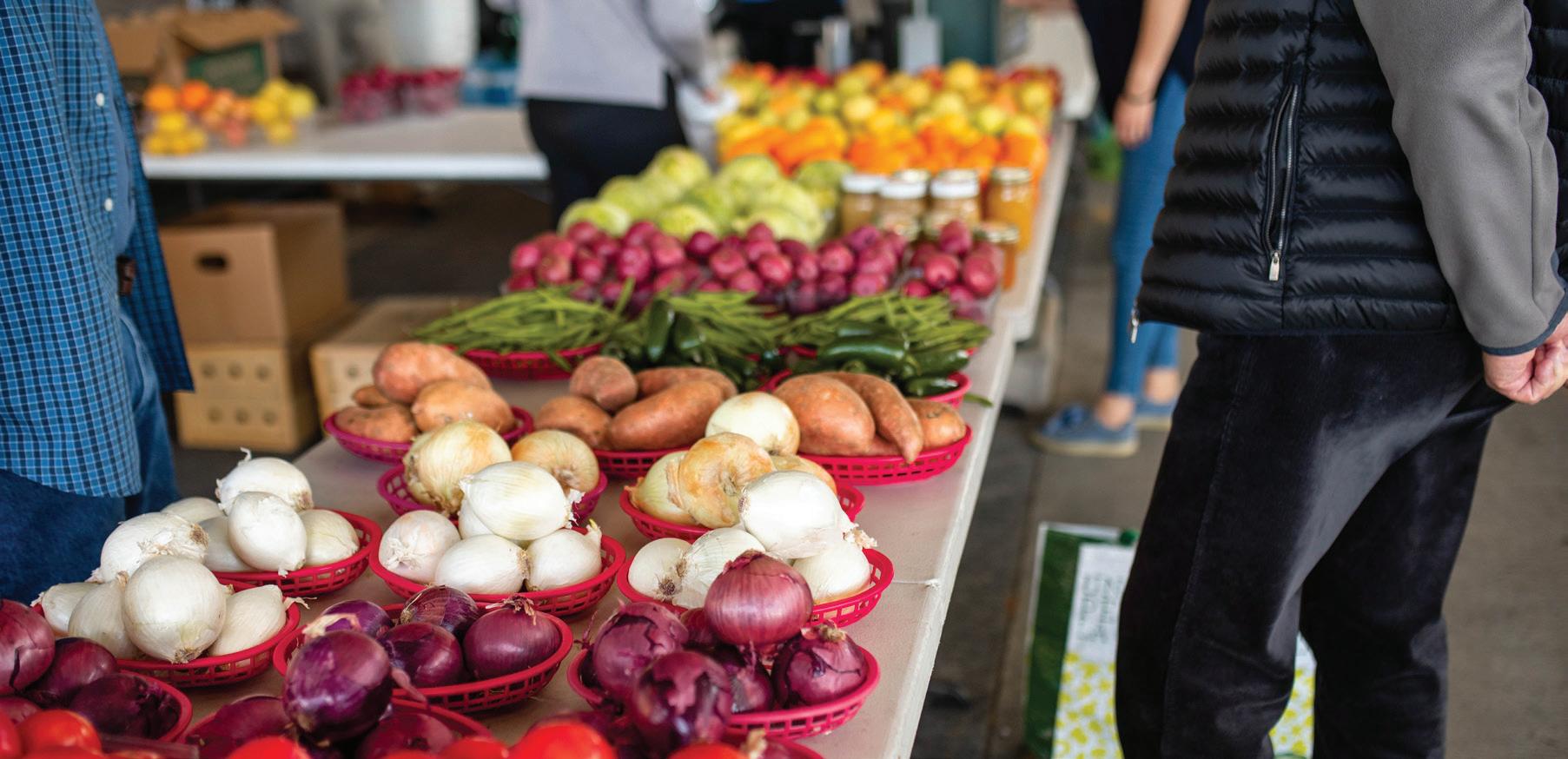
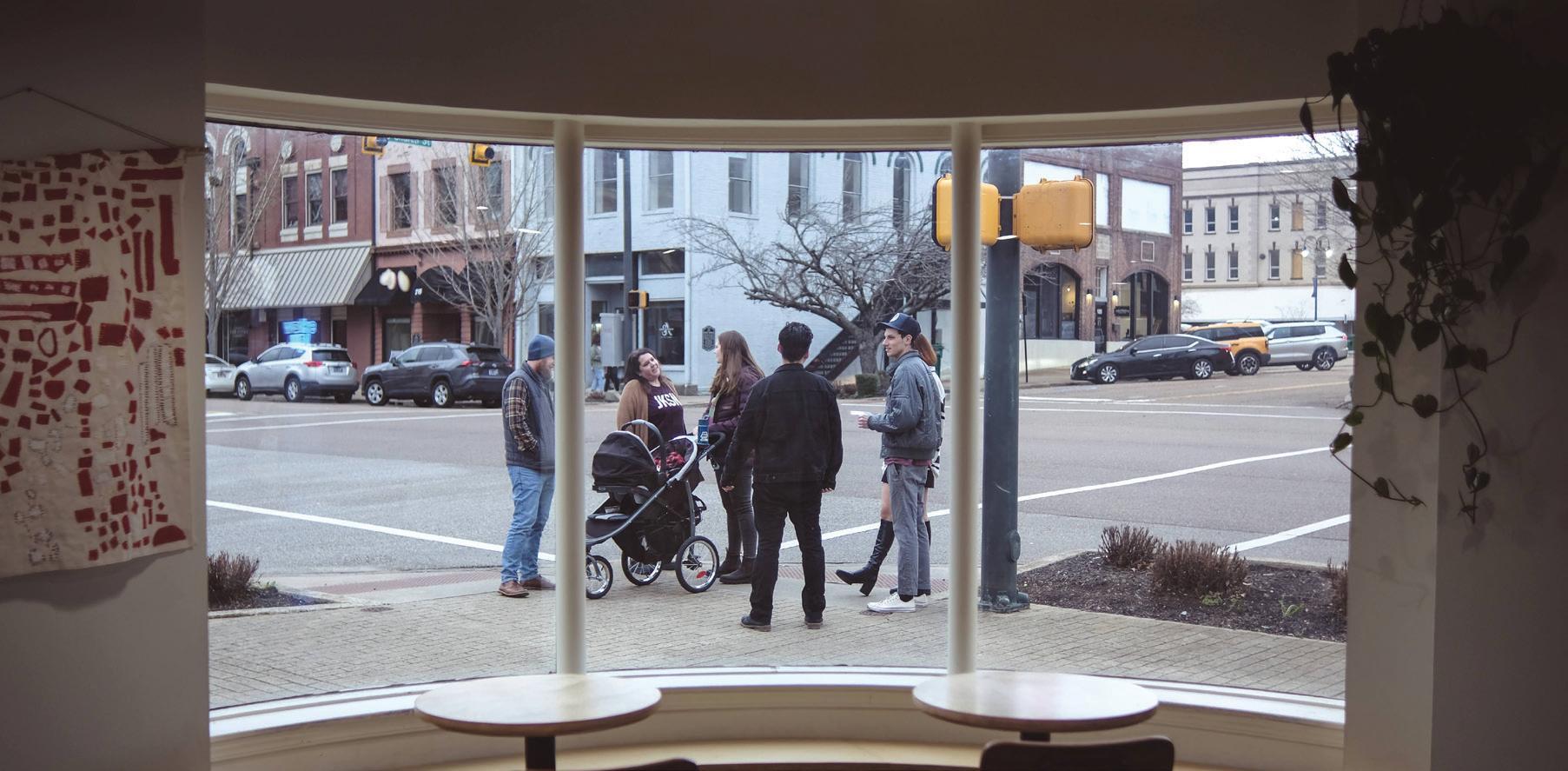
52 • OUR JACKSON HOME
BY BETH ANN SIMPSON
Since moving to Jackson, I have always been a part of the Downtown community, although it has evolved from my time as a college student nearly eighteen years ago. The last two decades, I have witnessed visionary new development, the rebirth of historic anchors, and small business pioneers changing the landscape. Taking on a new role as Director of Jackson Downtown Development this past year has given me a closer look and deeper appreciation for our resilient Downtown community. Downtown has experienced its ups and downs, but it is evident, Downtown remains Jackson’s core. As an intersection of our neighborhoods from North, South, East, and West, Downtown has the ability to bring us together and reflect our community at large.
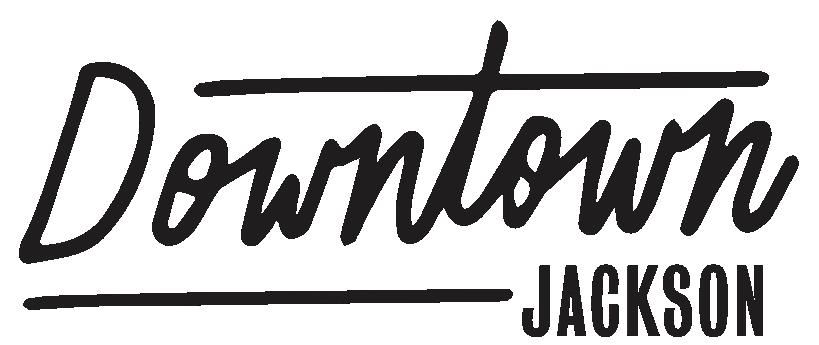
Through cultural arts, music history, city celebrations, the farmers market, and local shops, a common thread of community weaves through these spaces. These spaces create a sense
of belonging because of the relationships built in and around them. These relationships look like business owners collaborating and creating together, not to compete but cheer each other on. It looks like organizations and leaders working together for new ideas and solutions. It looks like residents, employees, and customers walking to work or having lunch with their neighbor. This is what makes Downtown unlike any other part of the city. It is where communities from Jackson Walk, to the Ned, to Jaxon Station can celebrate their own identities while sharing pride in being Downtown.
Downtown will continue to grow and change over the coming years, and my hope is we consider who and what makes up the soul of our city to ensure Downtown remains for everyone. Whether you already take up space Downtown or plan to visit, I hope you experience our eclectic sense of community and feel right at home.
VOL. 9, ISSUE 1: COMMUNITY • 53


DOWNTOWNJACKSONTN.COM/WALK

SPONSOR SPOTLIGHT
Growing CommunityOur
THE GREATER JACKSON CHAMBER
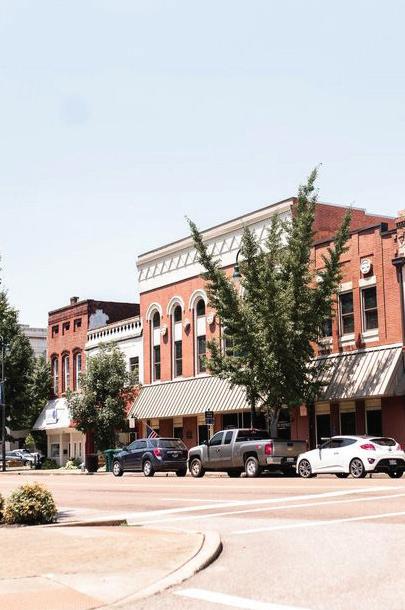
56 • OUR JACKSON HOME
The Greater Jackson Chamber has a long history of promoting economic growth and stability in the Jackson-Madison County area. With a diverse and talented staff, a board of directors, dedicated volunteers, and over 1,000 business members, the chamber is committed to developing and maintaining an economic climate that creates and retains jobs and enhances the quality of life for all citizens of Jackson-Madison County and West Tennessee.
To achieve this mission, the chamber works to promote the region as a great place to do business, attract new investment and companies and retain our current companies.
The presence of established companies like Toyota, Kellogg's, and Delta is critical to the region's economic growth and stability, as they provide jobs for local residents and contribute to the tax base. These companies help to create a stronger and more prosperous community for all.
In addition to promoting economic growth, the chamber recognizes the importance of building a strong and livable community for its current and future residents. The region has a rich history, a strong sense of community, and a wide variety of cultural events and attractions. The chamber helps to showcase these assets and promote the area as a great place to live, work, play, and
learn. This focus on community building helps to attract and retain talented workers and families, which is essential to the long-term success of the region.
The chamber also provides a wide variety of resources and services to its members, including networking opportunities, business development resources, and access to educational and training programs. By providing these resources, the chamber helps to support the growth and success of its member businesses, which in turn supports the overall economic health of the region.
Another important focus of the Greater Jackson Chamber is the development of new business partnerships. By providing resources and support to businesses and entrepreneurs, the chamber helps to create new opportunities for economic growth and job creation.
Jackson is a place that is poised to grow over the next few years, and the chamber is excited about the future. With a growing economy and a strong sense of community, the future of the region looks very bright. Ultimately, Jackson’s success relies on the contributions and collaboration of the local community. By working together to build a strong economy and community, residents and businesses alike can help to create a brighter future for Jackson-Madison County and West Tennessee as a whole.
VOL. 9, ISSUE 1: COMMUNITY • 57
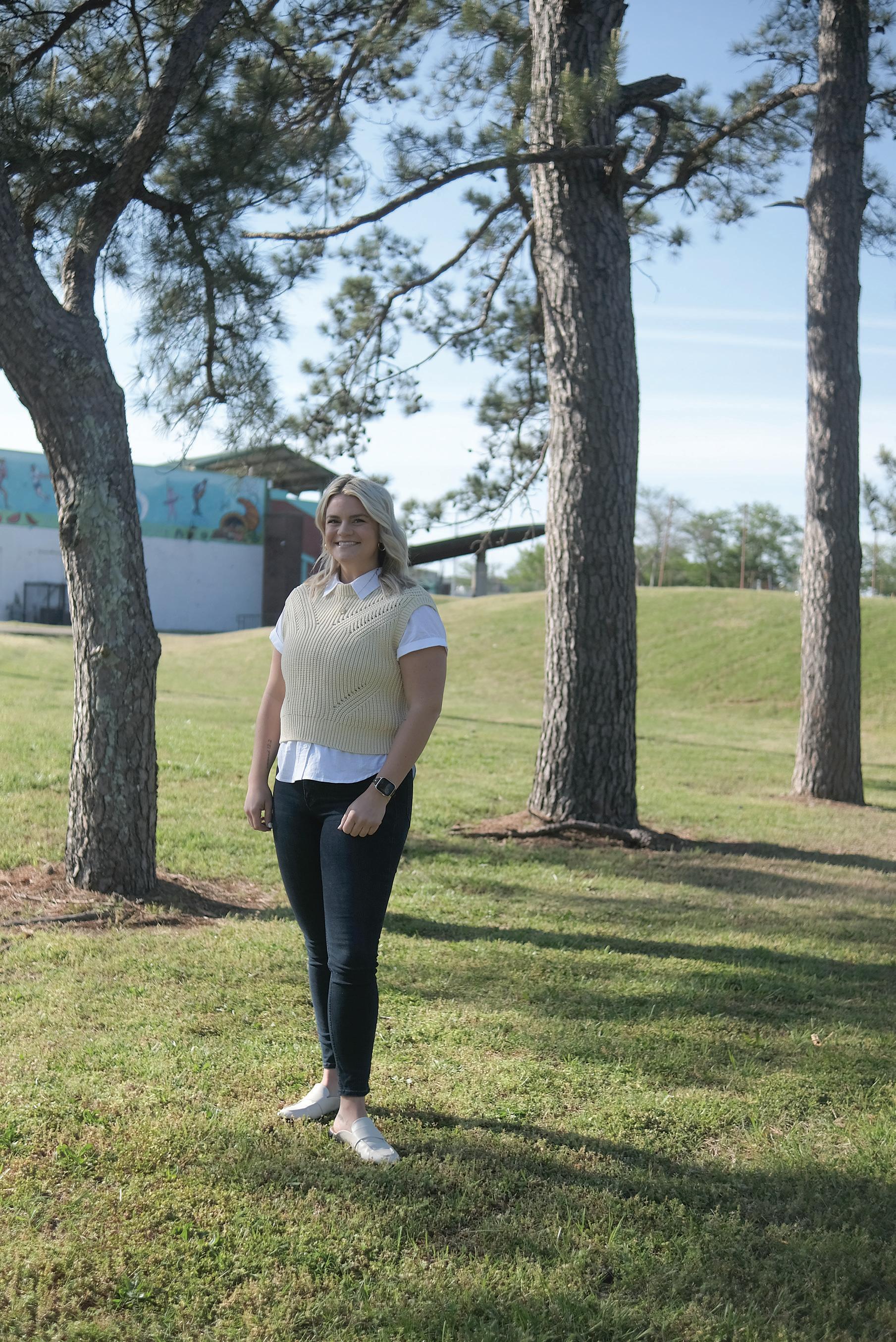
58 • OUR JACKSON HOME
Megan Davis
SALES OPERATIONS MANAGER MASTER MEDICAL EQUIPMENT
HOW LONG HAVE YOU LIVED IN JACKSON?
One year.
WHAT IS YOUR FAVORITE THING ABOUT THE JACKSON COMMUNITY?
I love the warm welcoming environment that is fostered here I love going to the local coffee shop and they know my order before I even say anything. It feels like family. Moving across the country this was so important to me to find a place that felt like home. Jackson has that.
WAS THERE
ANYTHING
IN
PARTICULAR ABOUT
JACKSON THAT MADE YOU WANT TO LIVE HERE?
I grew up in a smaller farm town in Illinois but moved from the metro Pheonix area, and Jackson blended both of those environments in one. All the fun local spots downtown drew my attention in as well as the outdoor things to do.
WHAT WOULD YOU TELL
SOMEONE
CONSIDERING MOVING TO JACKSON?
Jackson is everything you want it to be, if you put forth the step forward to meet people and get to know folks you will have an instant family. It has a lot of fun things to do, and great people.
FAVORITE THINGS IN JACKSON
Dog park with my pup, Turntable Coffee Shop downtown, farmers market, Hub City Brewing for live music and shopping at all the local boutiques. Plus any activity that is outside.
VOL. 9, ISSUE 1: COMMUNITY • 59
Marietta Haywood
ARCHITECT TLM ASSOCIATES, INC.
HOW LONG HAVE YOU LIVED IN JACKSON?
I have lived in Jackson for five years, and have worked in the Jackson area for over 20 years, since I moved from Brazil.
WHAT IS YOUR FAVORITE THING ABOUT THE JACKSON COMMUNITY?
The city I left in Brazil was 2 million people. Moving here, the sense of community is better. If you are in a sea of people, you don't have as much personal integration. With life in Jackson, you can have more connections that allow you to do more.
The personal relationships that you build with everyone in the community are strong. When anybody has a need, everybody jumps in to help. There is a feeling of servitude in Jackson. People volunteer and get things done with a spirit of servitude and faith to improve the lives of people who are in need.
WAS THERE ANYTHING IN PARTICULAR ABOUT JACKSON THAT MADE YOU WANT TO LIVE HERE?
I moved here to marry my husband Jim. So what brought me to Haywood County was my husband, but Jackson was where the business opportunities were as an architect.
WHAT DO YOU ENJOY ABOUT YOUR WORK IN JACKSON?
I enjoy getting to preserve the heritage of Jackson and West Tennessee when we design buildings. Everytime we plan anything we look at where it is going and how we are going to integrate with the history of the neighborhood where it is included, while also bringing innovation and sustainability to the projects.
60 • OUR JACKSON HOME
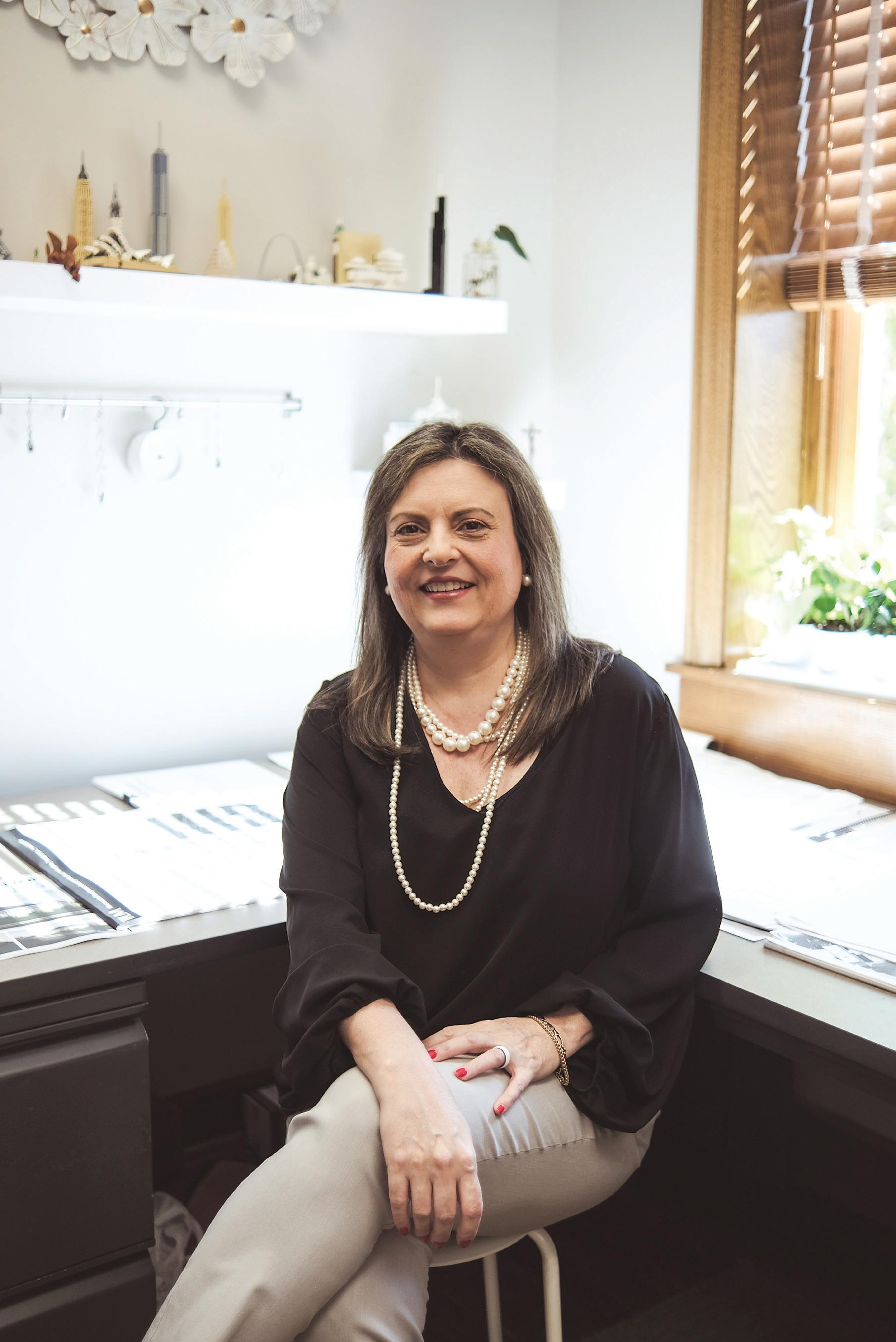
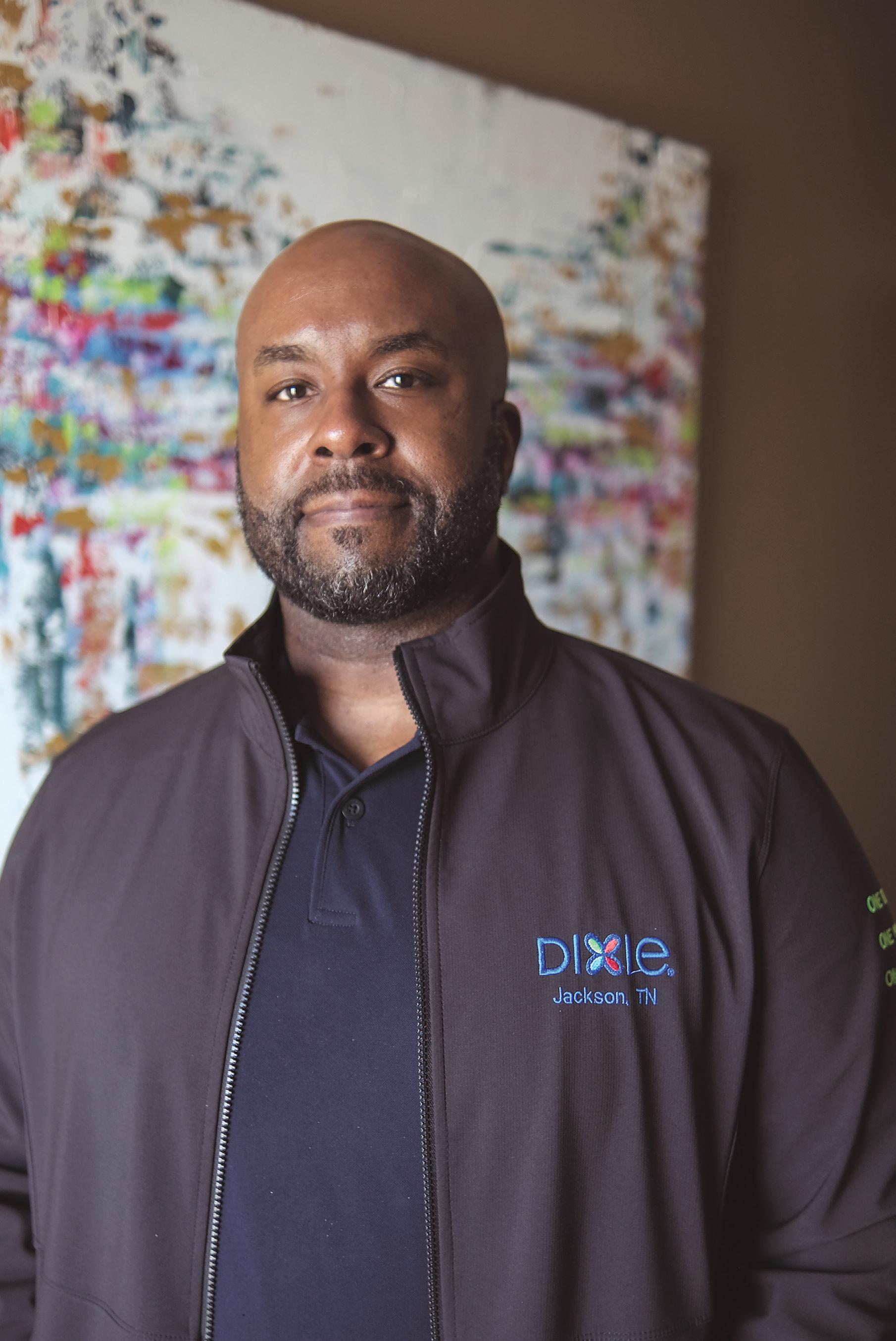
62 • OUR JACKSON HOME
Mike Cook PLANT DIRECTOR
GP-DIXIE JACKSON FACILITY
HOW LONG HAVE YOU LIVED IN JACKSON?
My family and I have been residents for only about nine months, but it feels like we have been here much longer as the transition process has gone smoother than we could have ever imagined.
WHAT IS YOUR FAVORITE THING ABOUT THE JACKSON COMMUNITY?
That’s an easy answer... the people! It didn’t take long for us to recognize and appreciate the people, the culture and the proud spirit that exists here. People who live here are genuinely proud of Jackson and all it has to offer.
WAS THERE ANYTHING IN PARTICULAR ABOUT JACKSON THAT MADE YOU WANT TO LIVE HERE?
When evaluating relocation opportunities, it was an important consideration for my family and I that we would be able to fully make ourselves a part of the community. In my previous role, I spent ~3 hours in a vehicle per day due to the commute that was necessary to provide my family with the opportunity to have access to the desired environment, resources, activities, and amenities. We found that the Jackson area checked all of those boxes and we are excited to be here!
WHAT WOULD YOU TELL SOMEONE CONSIDERING MOVING TO JACKSON?
The people of Jackson have welcomed my family and I with open arms and the quality of life here provides big city amenities and access while maintaining a small town, family-oriented environment.
FAVORITE THINGS IN JACKSON
When we are not supporting the kids in their extracurricular activity schedules, my wife and I have enjoyed exploring the many restaurants and entertainment options around the city and the surrounding area.
VOL. 9, ISSUE 1: COMMUNITY • 63
Dan Brooks
MATH INCLUSION TEACHER, NORTH SIDE HIGH SCHOOL
HOW LONG HAVE YOU LIVED IN JACKSON?
Almost 20 years.
WHAT IS YOUR FAVORITE THING ABOUT THE JACKSON COMMUNITY?
Everybody cares about the city, and they're willing to help in the city. . In the 2008 tornado that went through Union University, and through my neighborhood, North Side High School sent over their student council to help clean up in the neighborhood, and I saw that throughout the community in 2008. And I see it even today in all kinds of volunteer work that goes on in the community. We are a volunteer community. Everybody is willing to pitch in to help and that's what we love about it. It's a small enough community, you can see the results of what people do.
WHAT WOULD YOU TELL SOMEONE CONSIDERING MOVING TO JACKSON?
Having worked for the Jackson Arts Council, especially as their Vice President of Development, I can tell you about a few things people look at when they move to a community. First off, they move because of the school system. And we love the schools and my wife and I both work in the schools. Number two, they want to know about the arts and entertainment in the community. We have lots of art and entertainment that go on, and that is building because of the Jackson Arts Council, and so is the school system with Dr. King's leadership.
FAVORITE THINGS IN JACKSON
I have become involved in a lot of nonprofit organizations, the Boy Scouts, Jackson Arts Council, RIFA, March of Dimes, the Sons of the American Revolution and am active in my church, and in the school with a lot of activities that go on. So my schedule is busier in retirement than ever.
Being involved in the Boy Scouts over the years — all of the outdoor activities have been a great thing. I love doing that. We have great State Parks around Tennessee, and being empty nesters right now, we do a lot of traveling, including to a lot of the state parks. One of the parks that is really coming together that we've worked with on some Eagle Scout projects is Middle Fork Bottoms.
64 • OUR JACKSON HOME
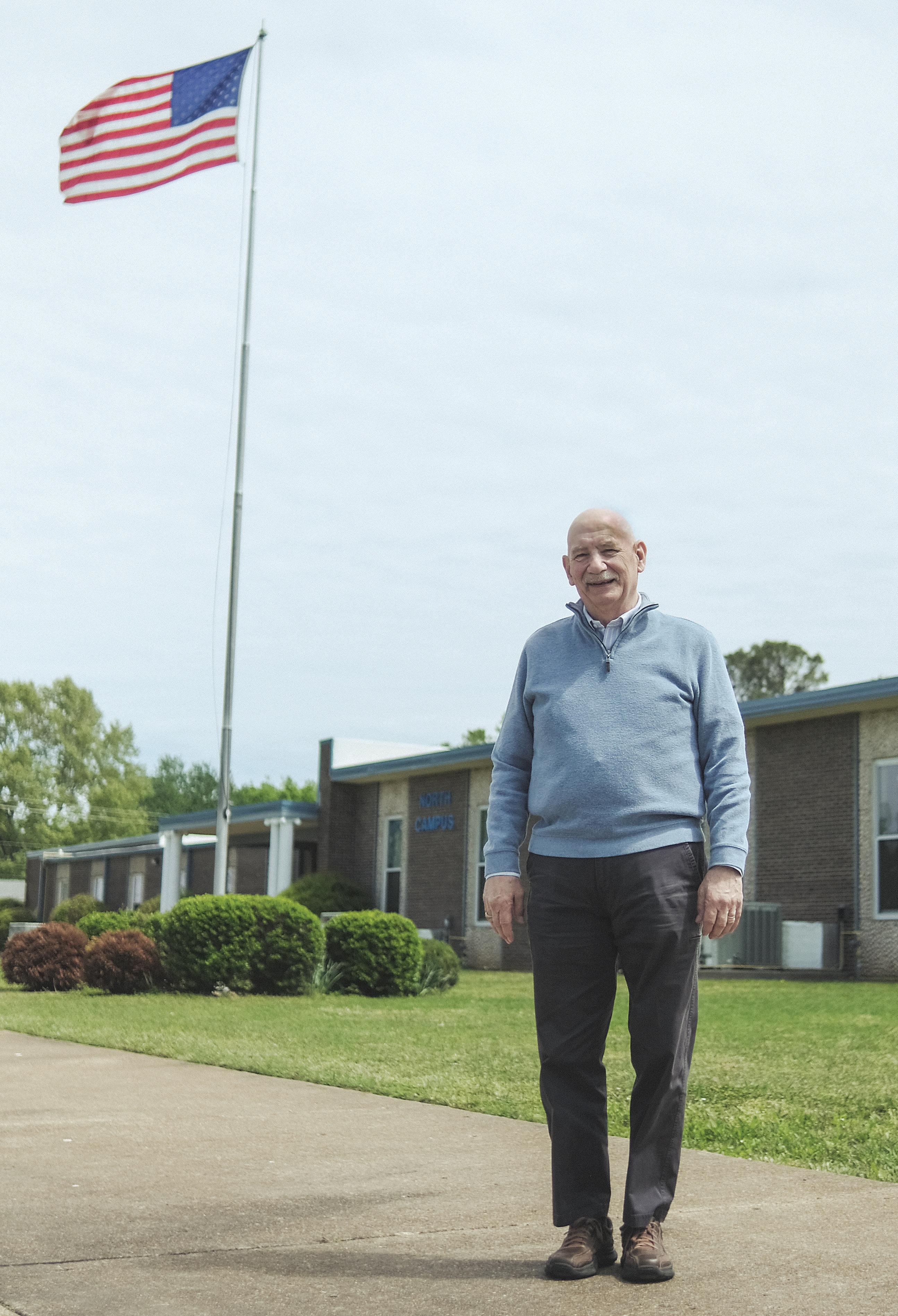
VOL. 9, ISSUE 1: COMMUNITY • 65
Contributors
IN THIS ISSUE
ERIC ARCHER is a Jackson native and a Journalism student, currently attempting an undergraduate degree at Union University. He enjoys media writing and anything that falls in the realm of music, film and tv, or art. When he's not writing, he is spending time with his son, playing outside or watching Mickey Mouse Clubhouse for the millionth time.
AVERY CHENAULT has called Jackson home for over a decade. She currently studies journalism and intercultural studies at Union University. She enjoys writing, learning to cook new recipes, and getting lost in a good book.

HANNAH GORE is a photographer from Jackson,Tennessee, who currently lives in the nearby town of Medina. She is currently working to earn her associates degree in mass communication at Jackson State Community College. Through her passion for authenticity, she seeks to capture the heart and soul of Jackson through the art of photography. When she doesn’t have a camera in her hand, you can find her in the corner of a coffee shop with a good book, learning a foreign language, or watching Korean dramas.
CARI GRIFFITH is a gardener and a photographer with a lifelong affection for seed sowing and storytelling. She lives a very sweet life in midtown with her husband Rob. She spends most of her time behind a computer or a camera, and her most treasured moments are eating dinner with her friends both near and far.
GABE HART is the Chief Communications Officer for Haywood County Schools. A lifelong Jacksonian, Gabe is a product of the Jackson-Madison County School System and taught English in JMCSS for fourteen years. Along with contributing to Our Jackson Home, Gabe also writes monthly columns for Tennessee Lookout and The Jackson Sun and has been published in The Tennessean. He lives in Midtown Jackson with his daughter who attends high school at Madison Academic. When he's not in Jackson, he's most likely traveling with his partner, Laura, or spending time with her in her hometown of Philadelphia.
66 • OUR JACKSON HOME
TRISTA HAVNER is a born and raised Jackson girl, a mom, wife, and small business owner. She and her husband, Charlie, have a charming local family business and are passionate about the history there. Trista can be found putting together frames in her family’s shop or lettering anything that will hold still. Her love for home grows daily, and she is passionate about being an agent of growth and positive change in her beloved Hub City.
LILY K. LEWIS is a senior at Madison Academic, and she recently published her first book, “Everlasting Light.” When Lily isn’t at theater rehearsal, you’ll find her drinking coffee, writing, or baking something with chocolate. Lily believes that writing is a form of connection and always tries to embody that in her work.
MADDIE STEELE is a writer and photographer who recently graduated from Union with a degree in Journalism. She loves telling real and authentic stories from behind the camera or on the page. In her spare time, she loves hosting people, traveling, and baking cakes.
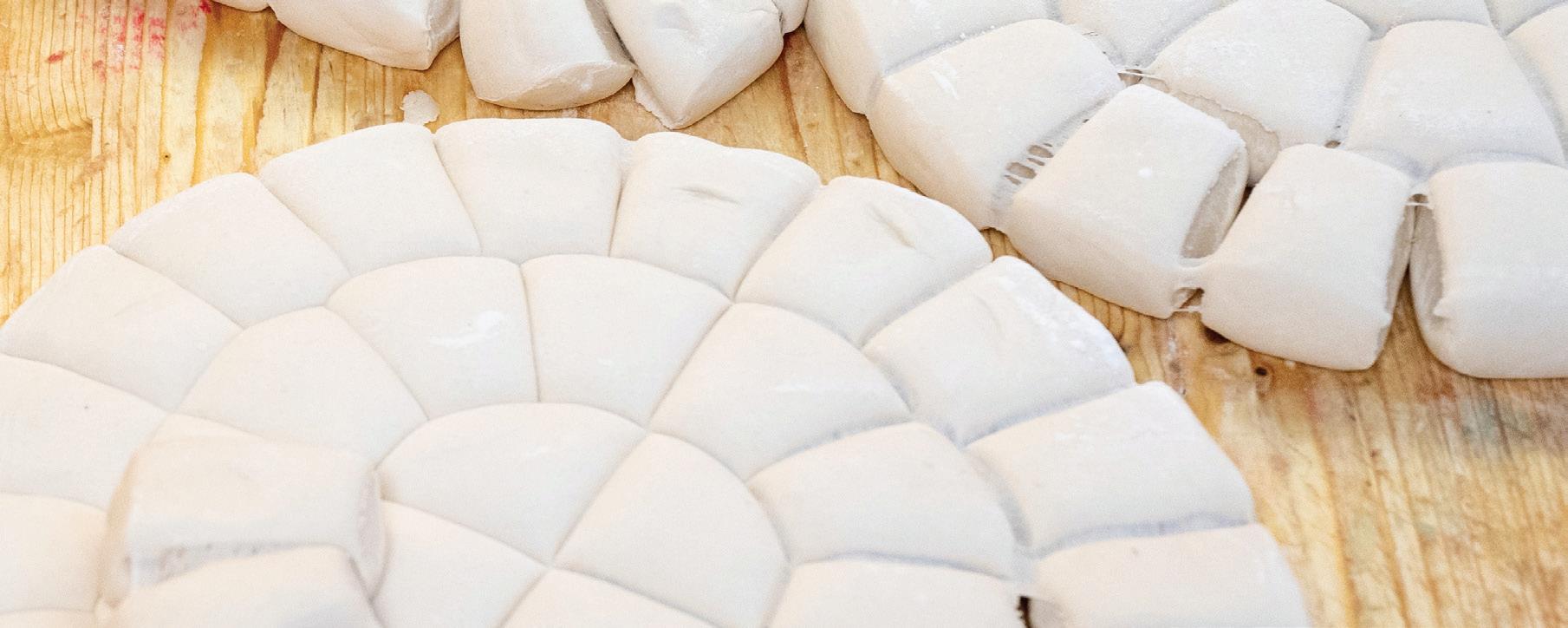
COURTNEY SEARCY became the Program Director of Our Jackson Home at theCO in 2020, having contributed to OJH as a writer, photographer, and volunteer since 2015. Courtney serves as Editor-inChief for the blog and magazine and coordinates events and Our Jackson Home projects. She thinks the best things in life are good food, art, music, and friends to share it all with.
ELVIA TREJO is a VISTA for Love Your Block and a seamstress. With a strong passion for bridge building, she is dedicated to bringing communities and cultures closer together. In her free time, she enjoys spending quality time with her friends or baking with husband Nicolas and children Leo, Leia and Lorenzo. She enjoys crochet and a good book at the end of any day.
TAMARA REED MILLER is a Hairstylist/Entrepreneur and a Photographer. Tamara is a graduate of Haywood High School & West TN School of Cosmetology. Her gift for hair & photography can be seen.
VOL. 9, ISSUE 1: COMMUNITY • 67
JAC KSON , TN




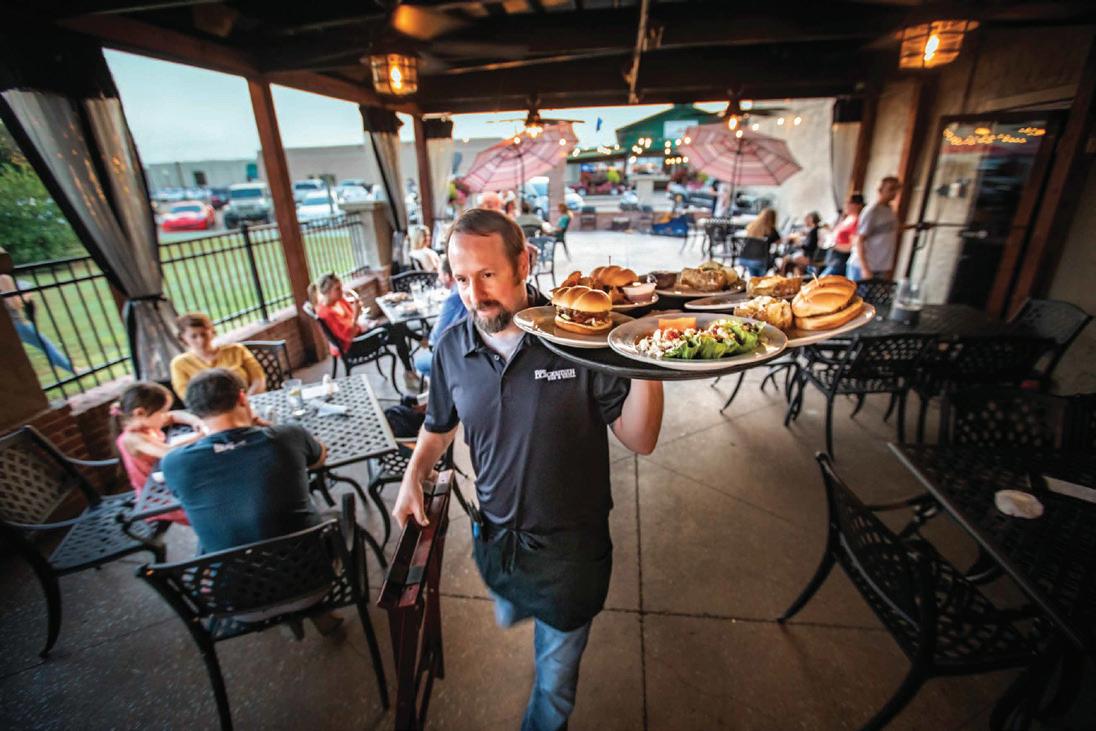

LI V E. WOR K. P L AY. LE AR N .
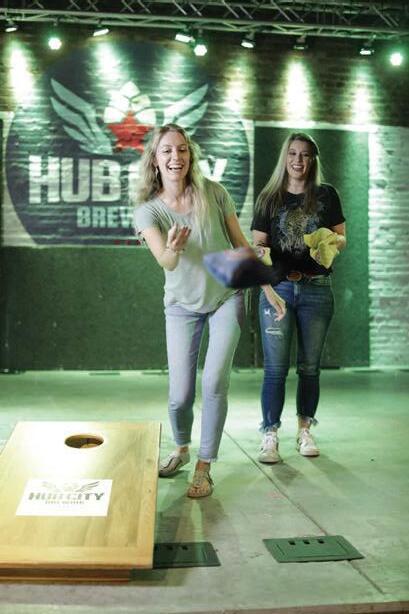
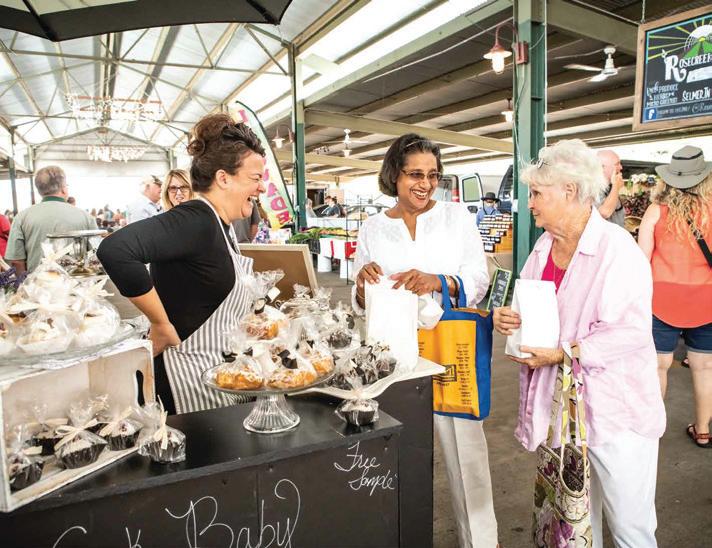














 BY LILY K. LEWIS
BY LILY K. LEWIS











































